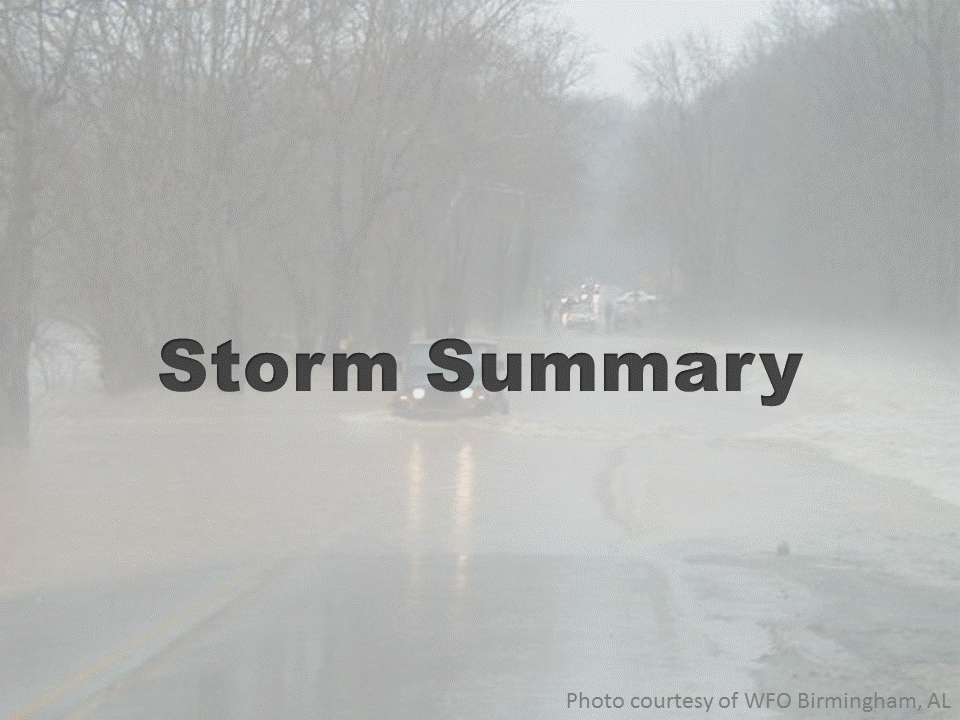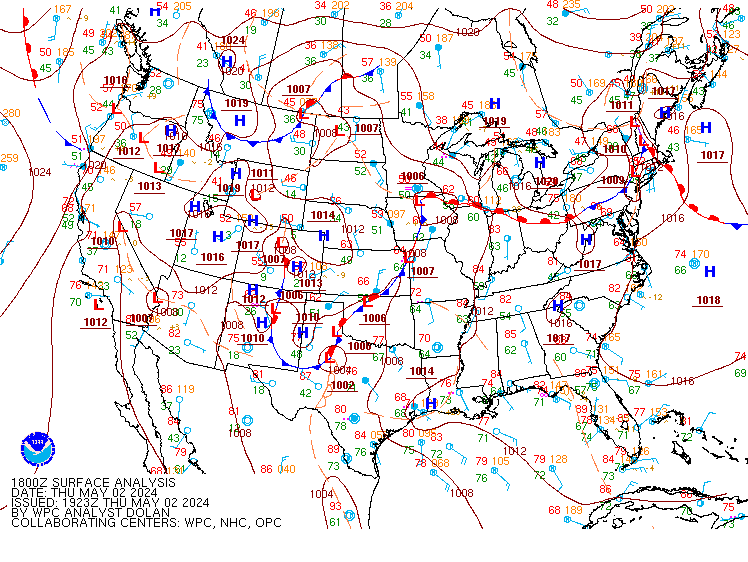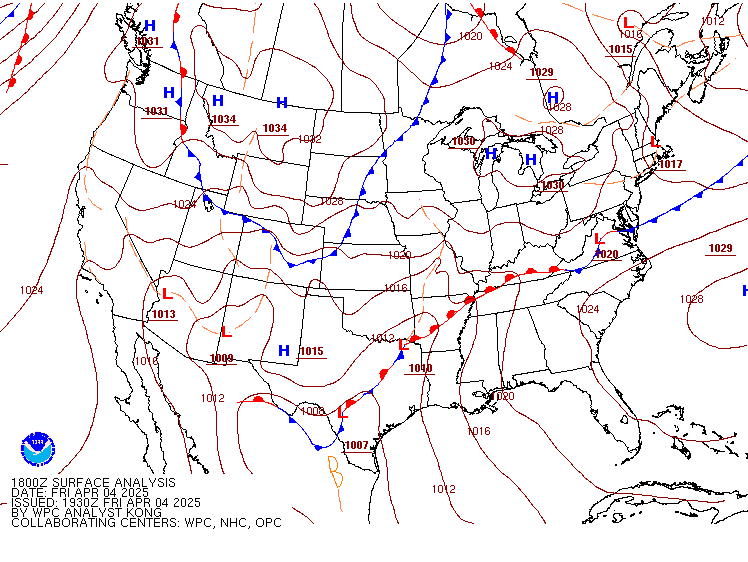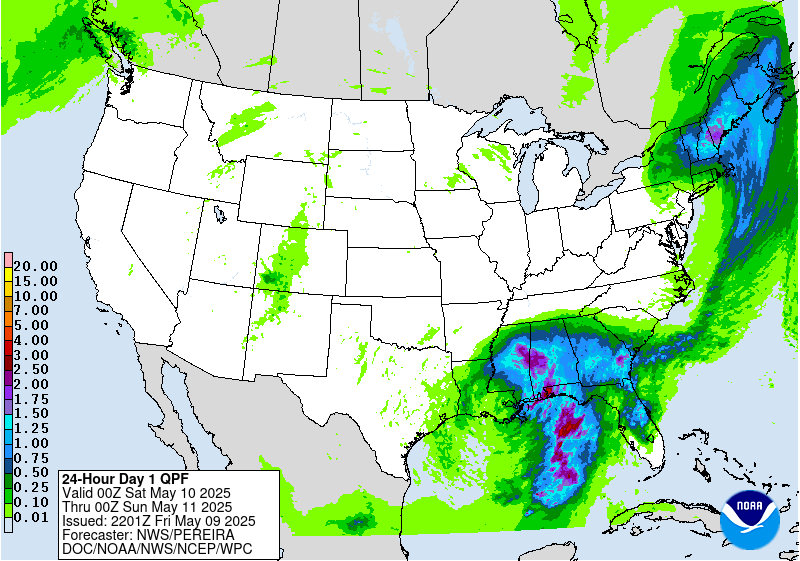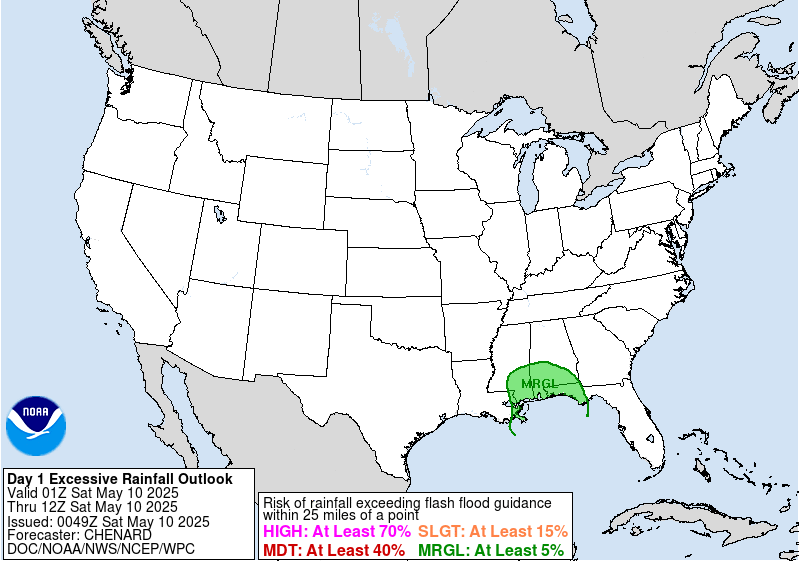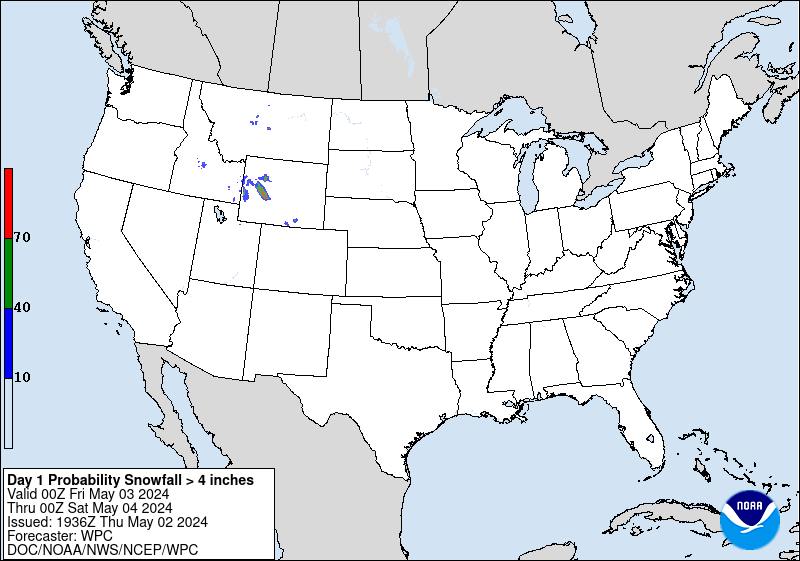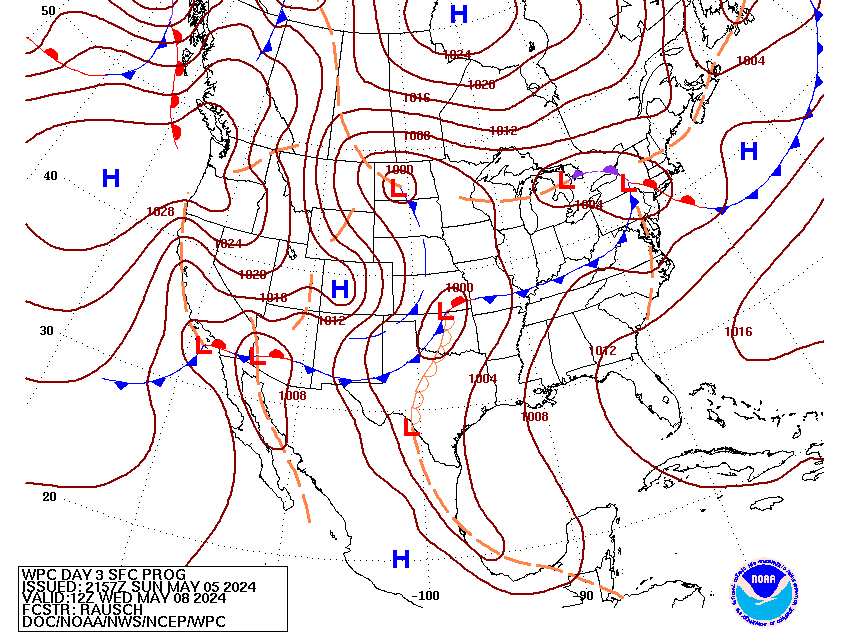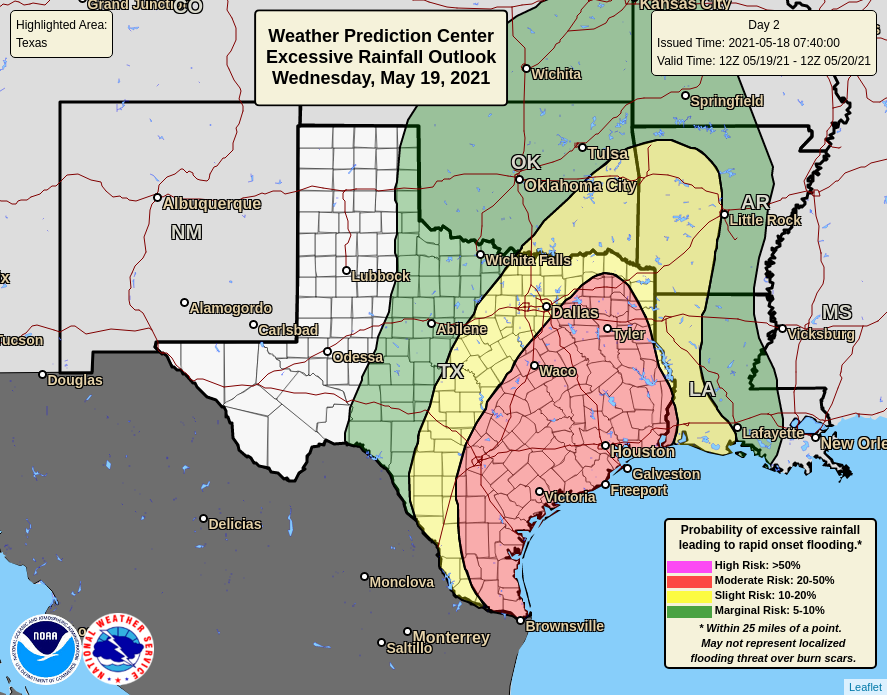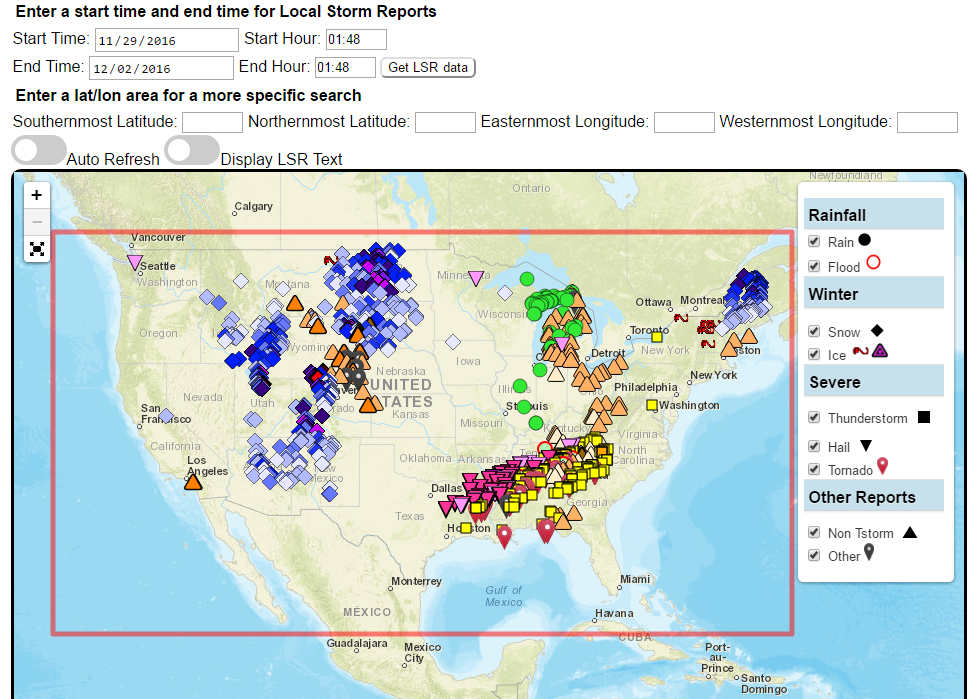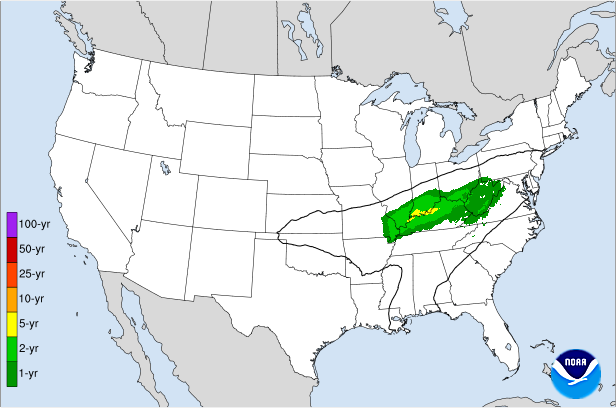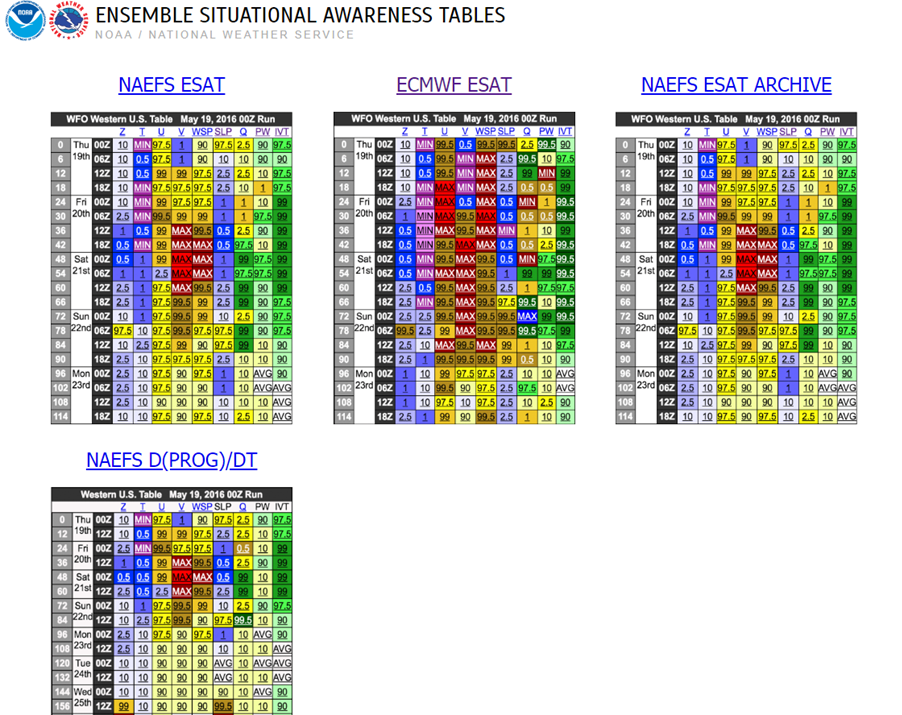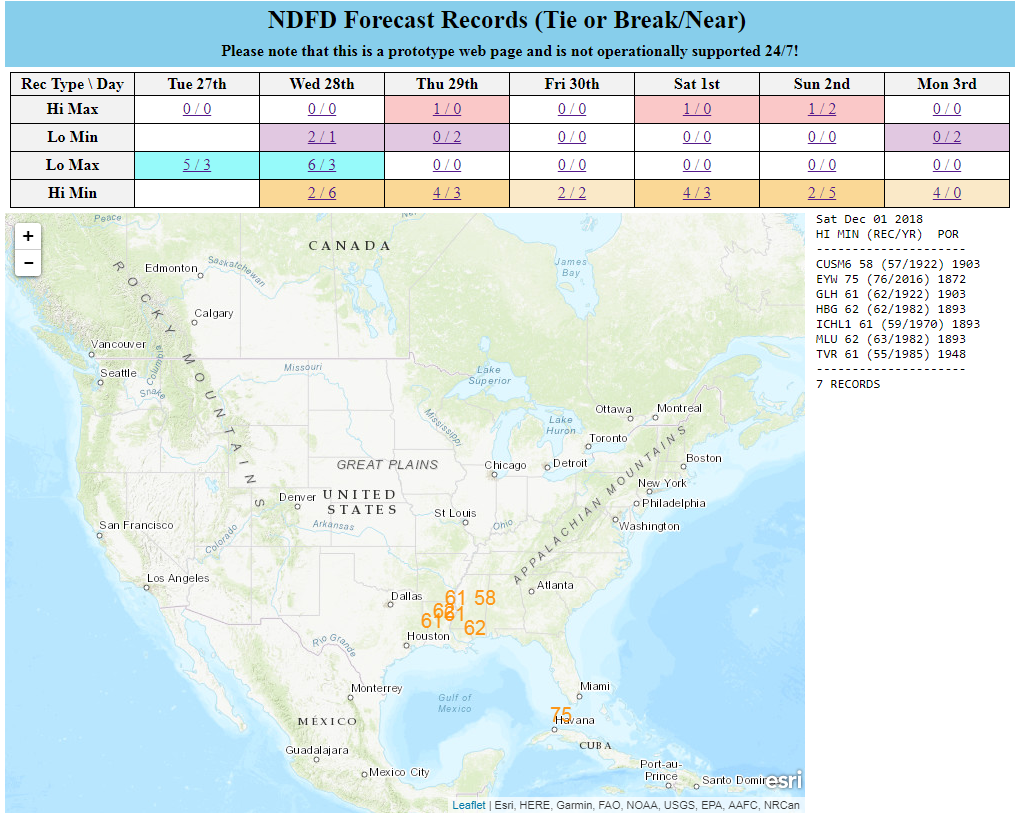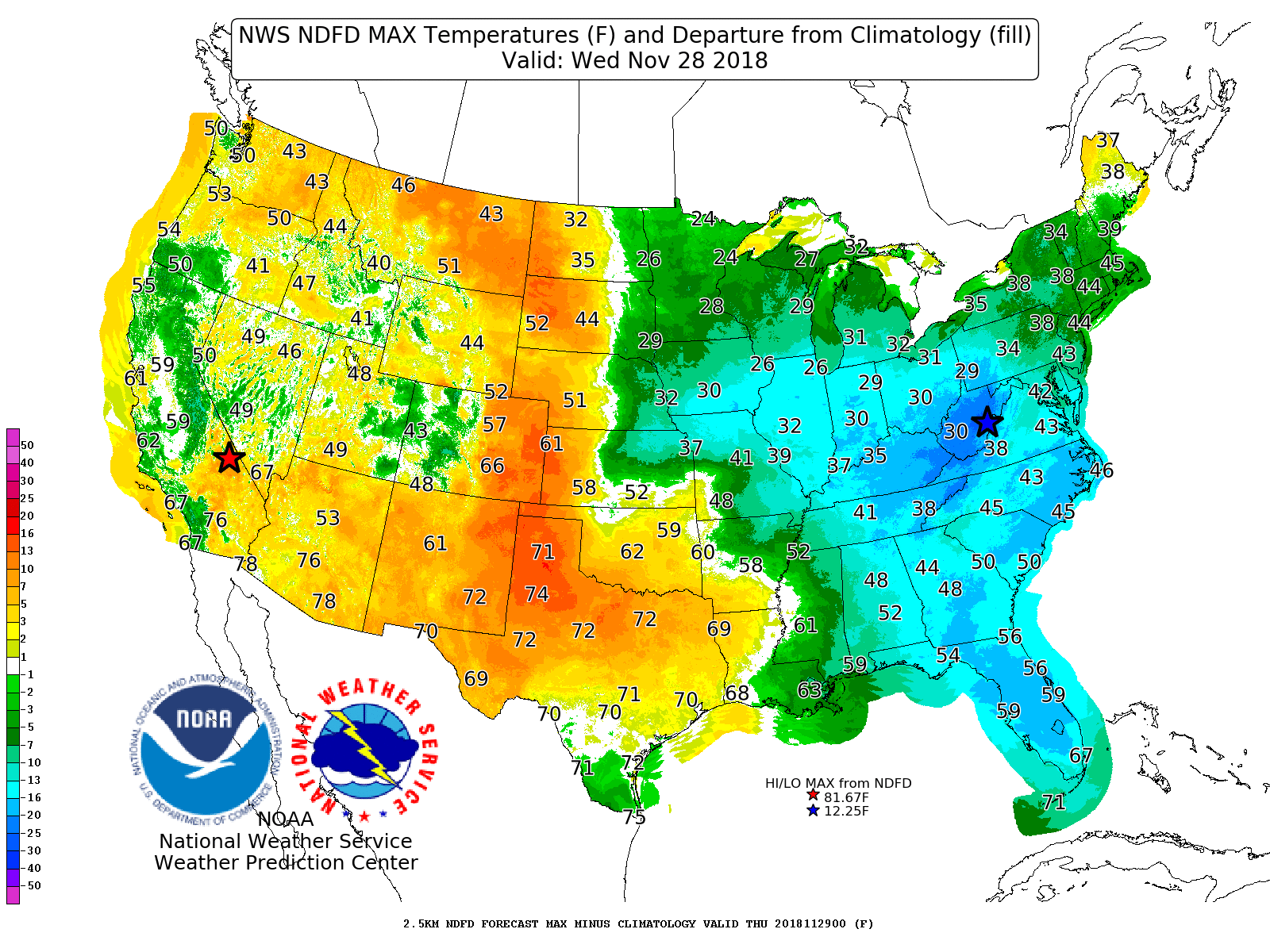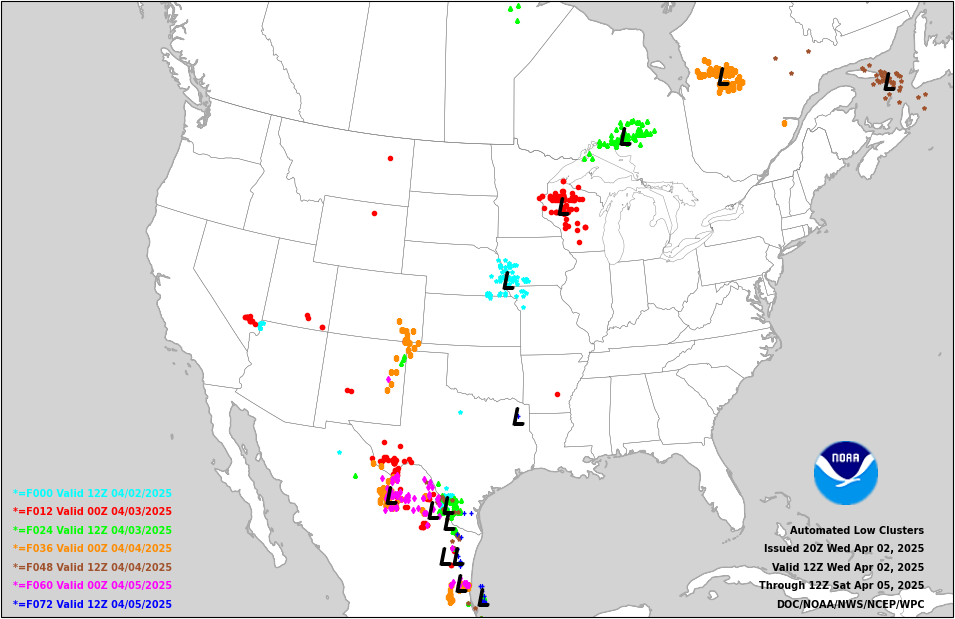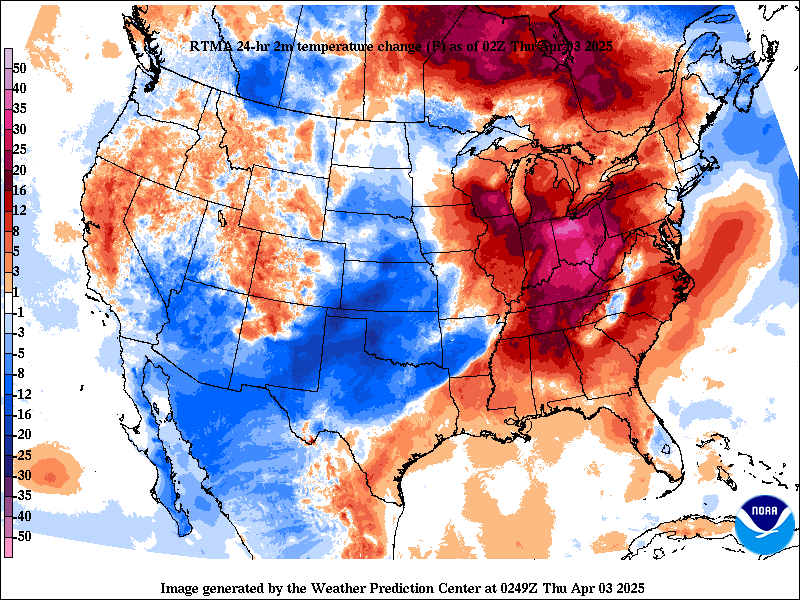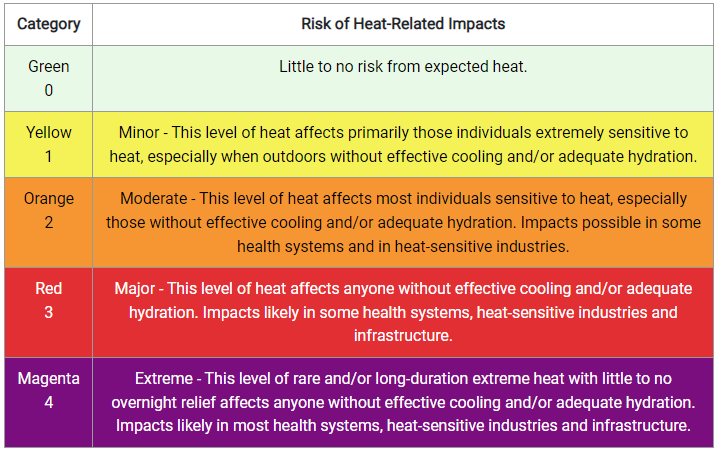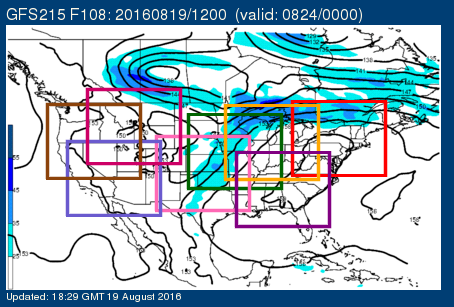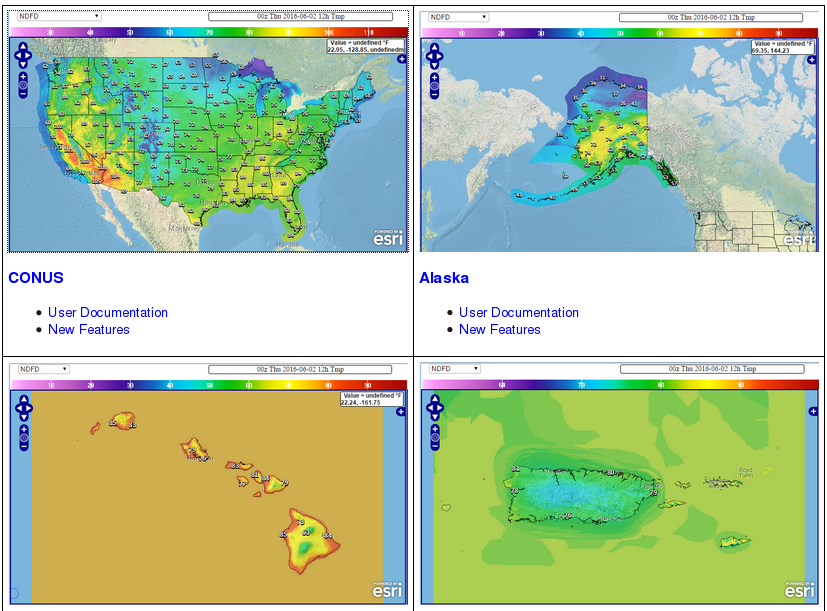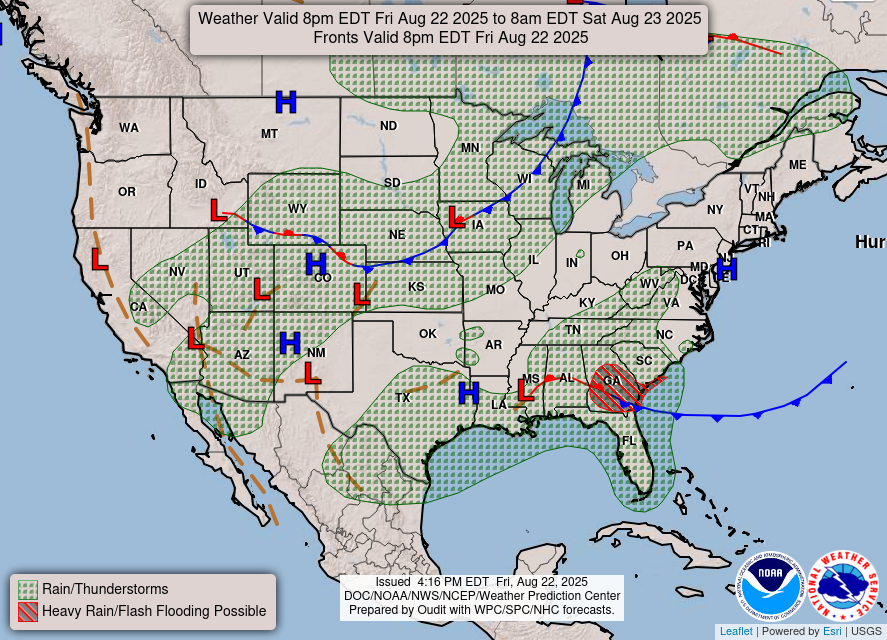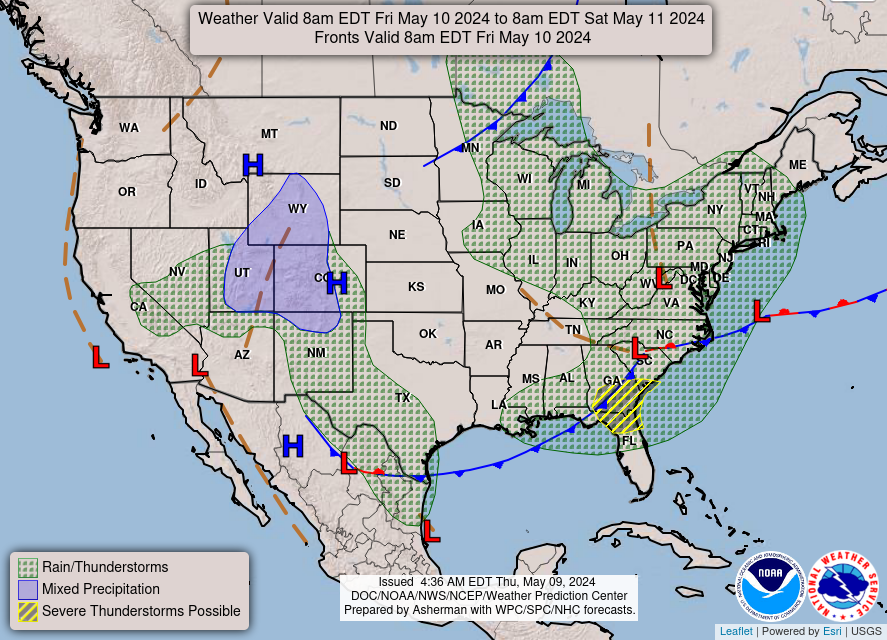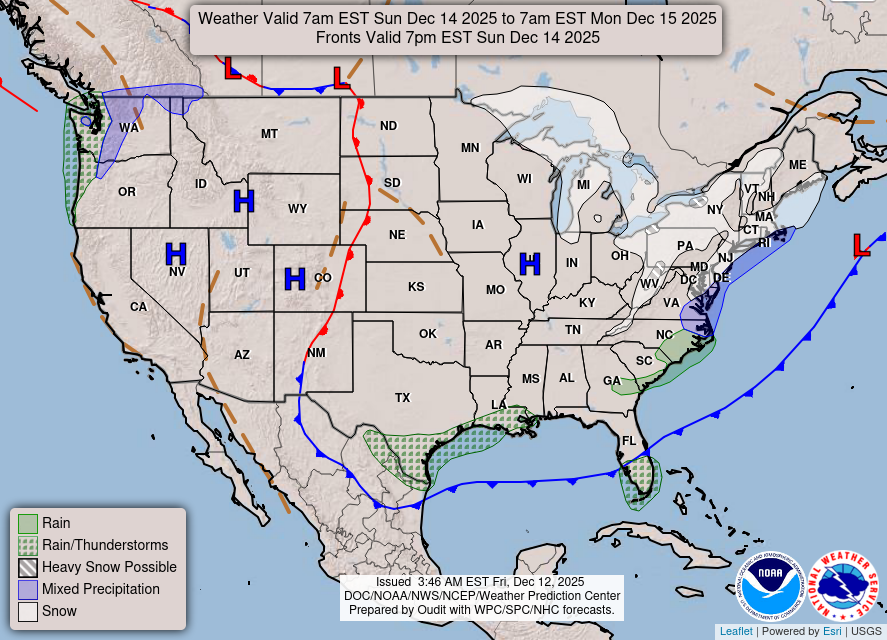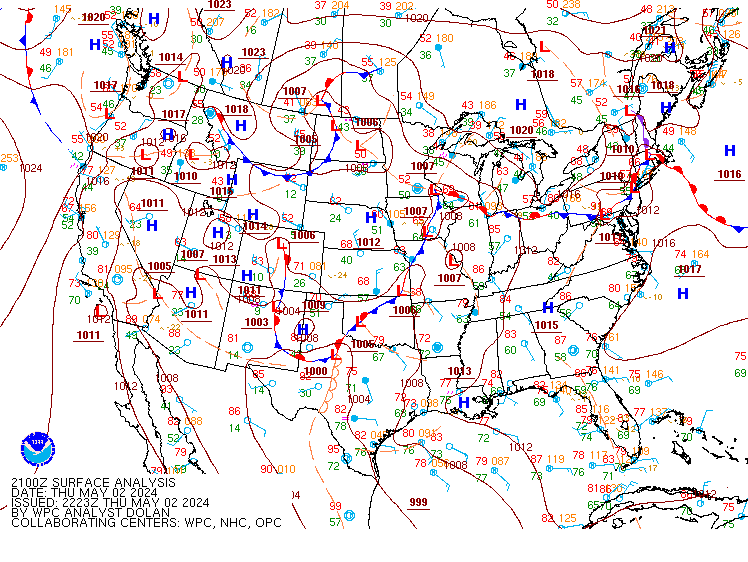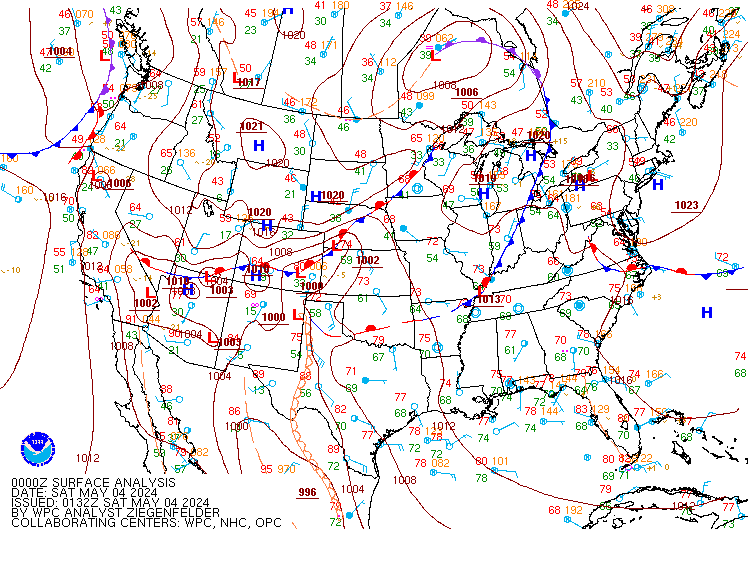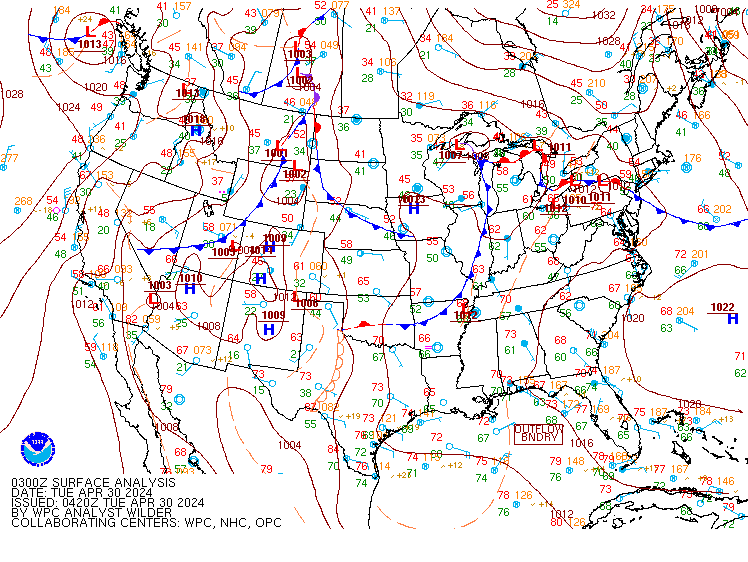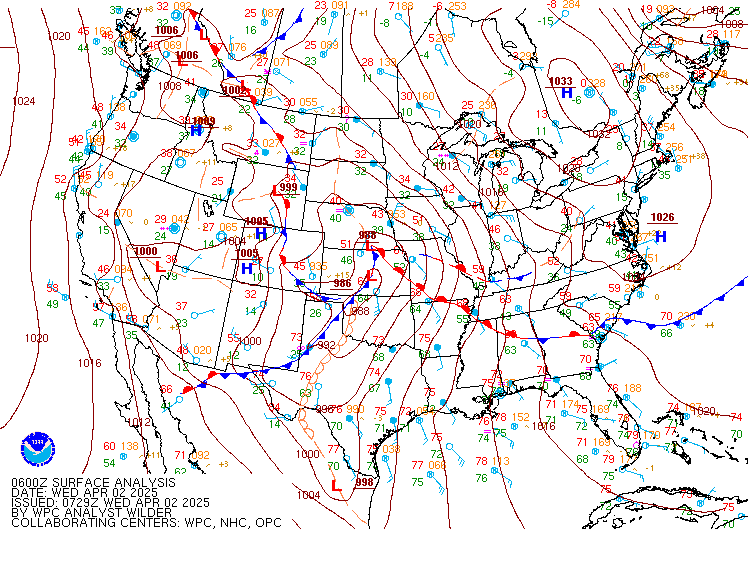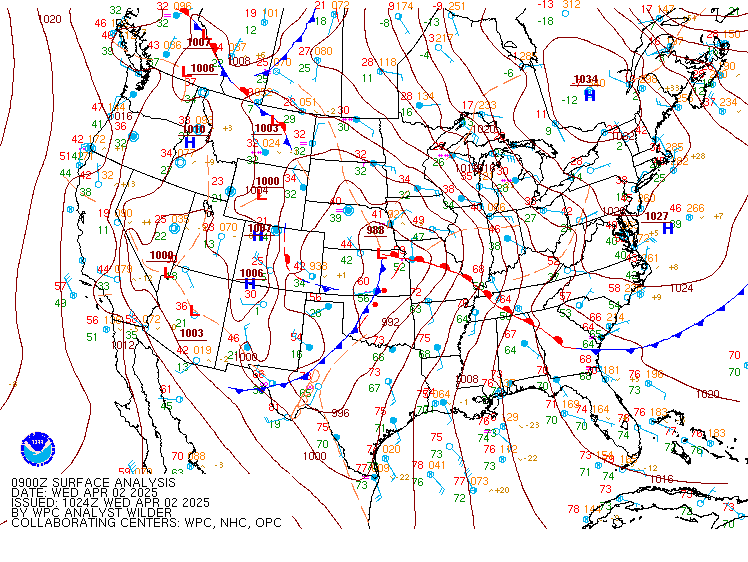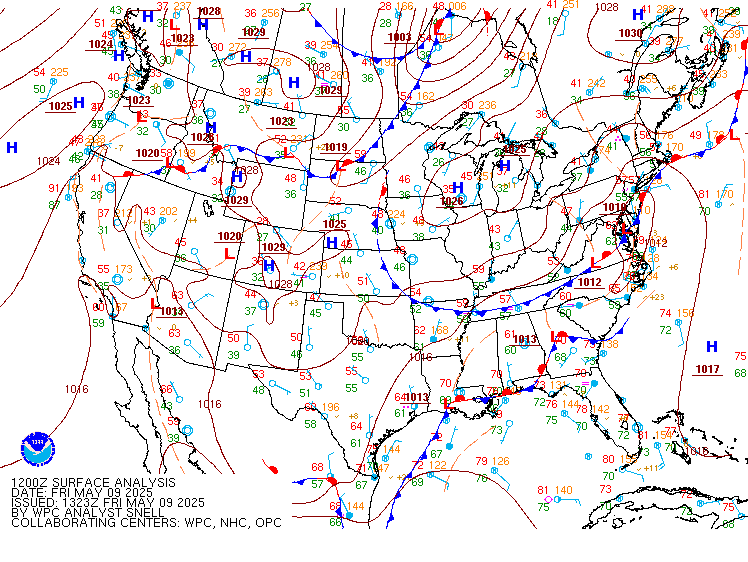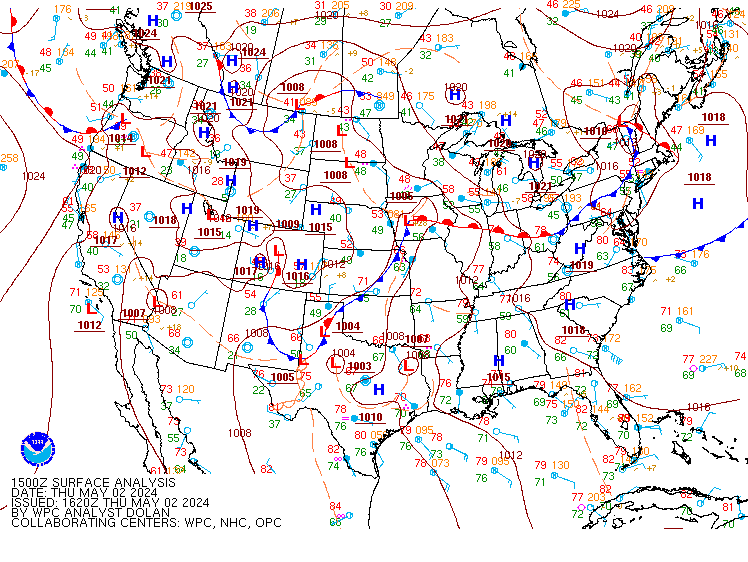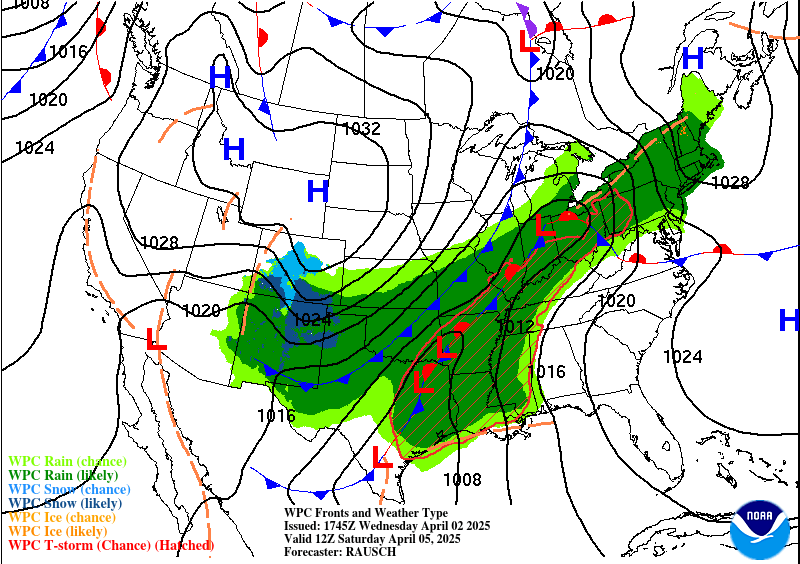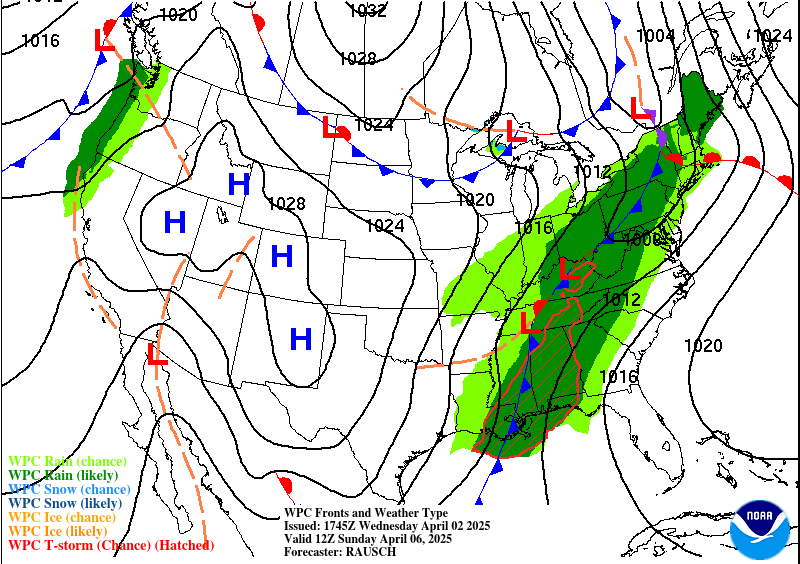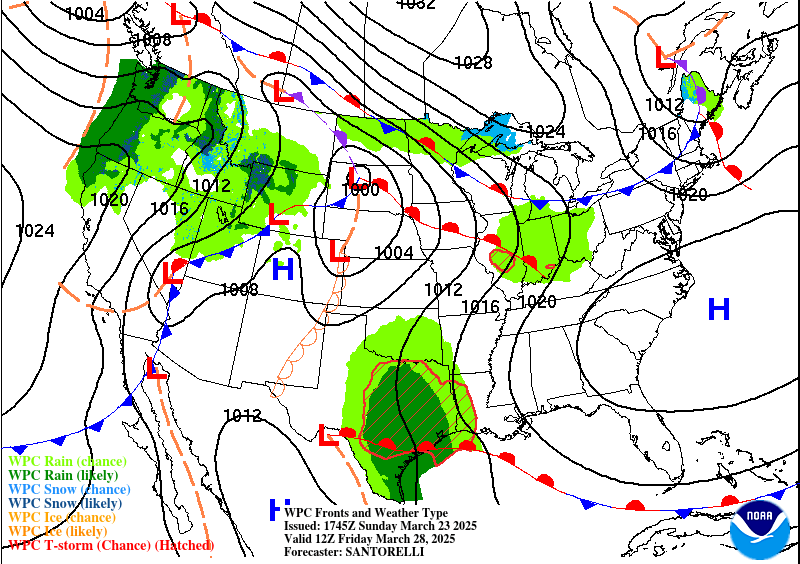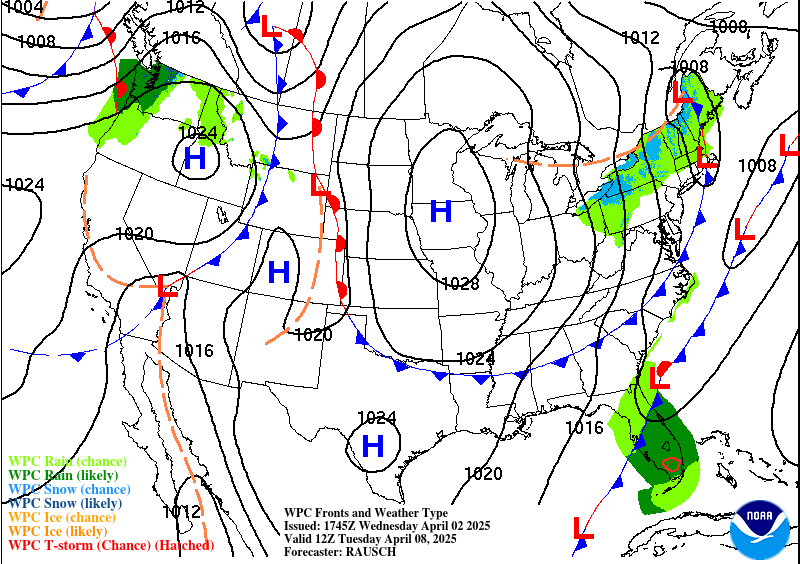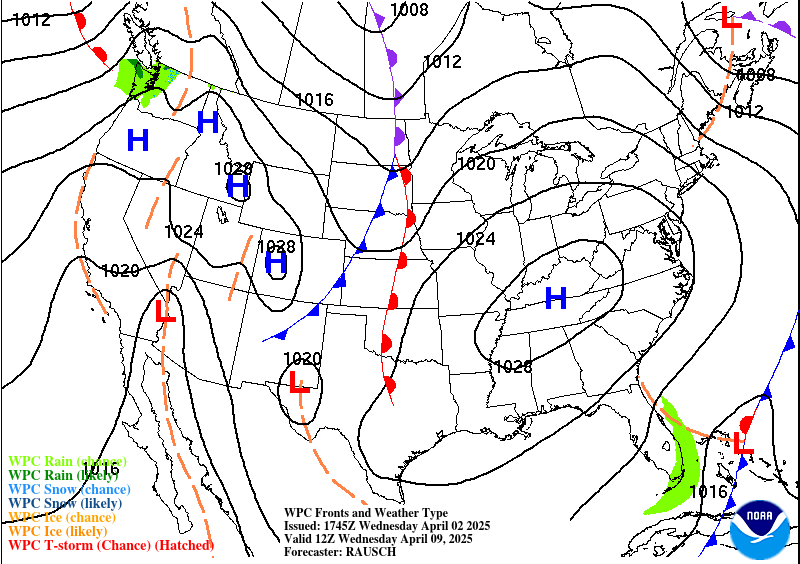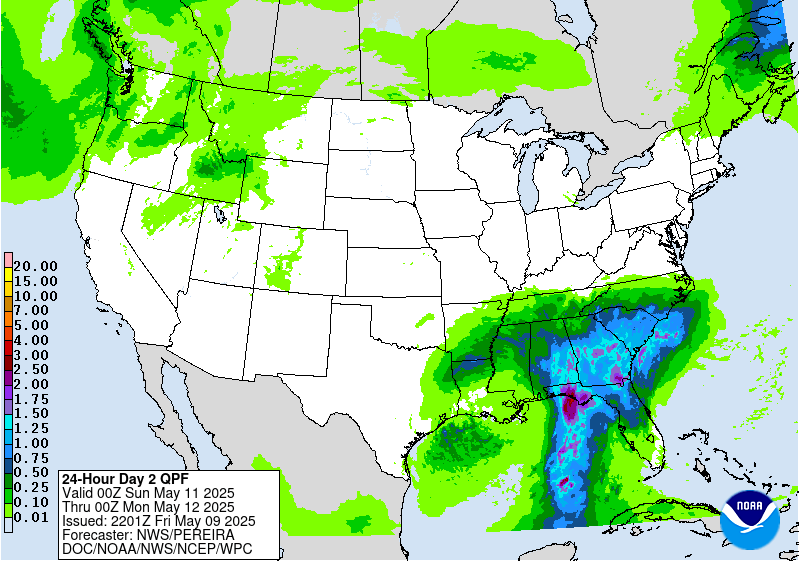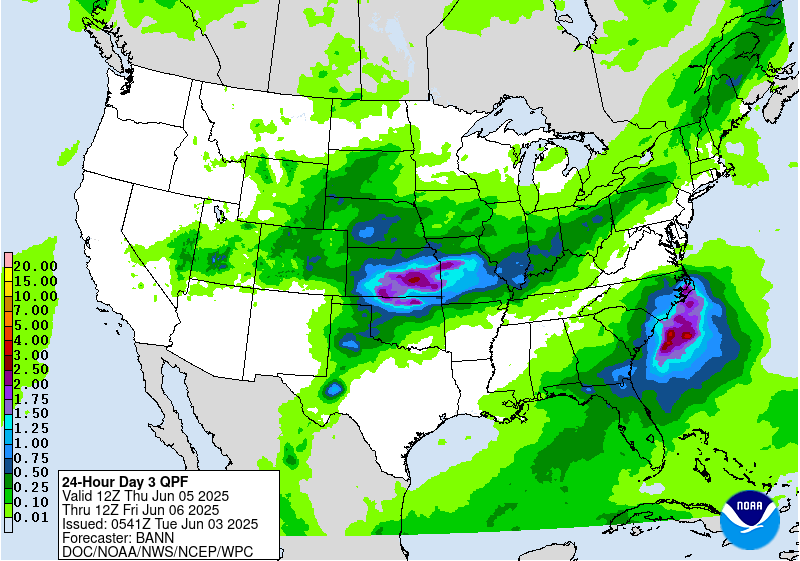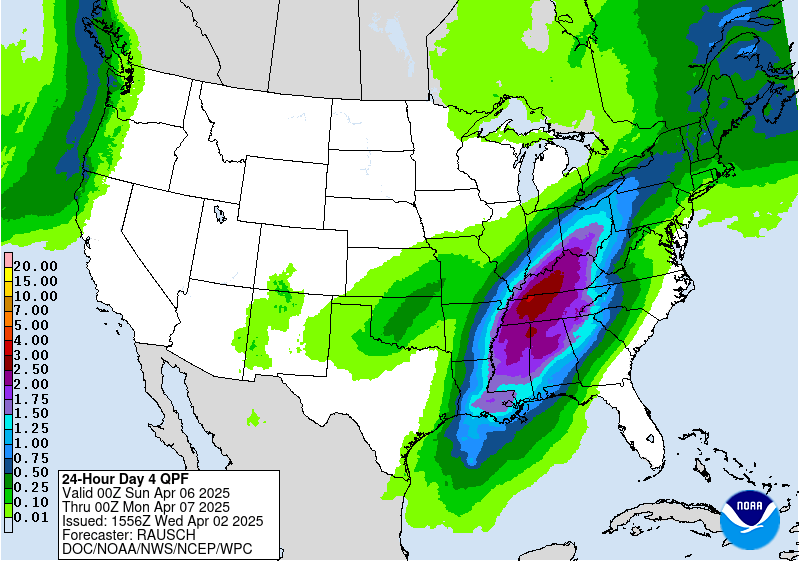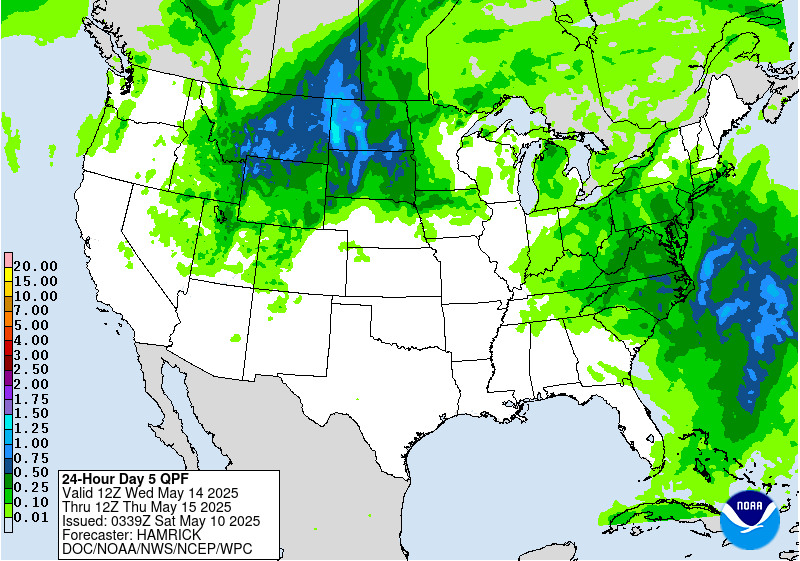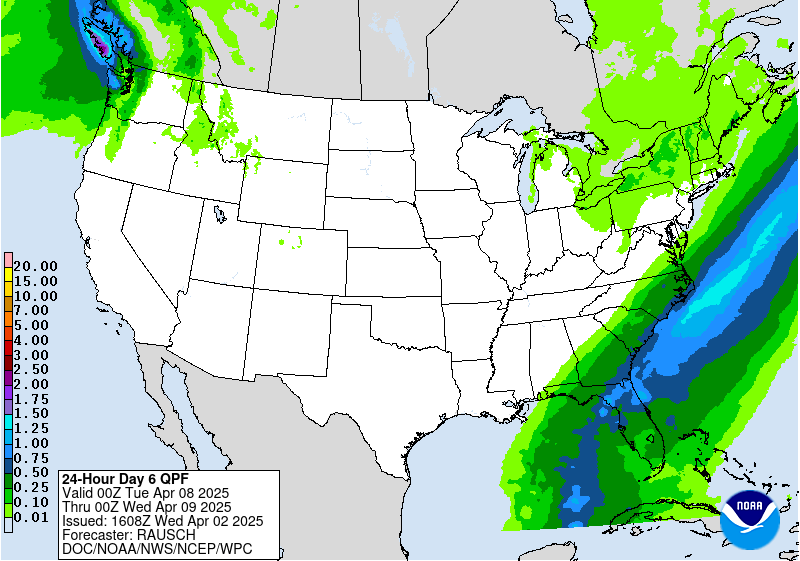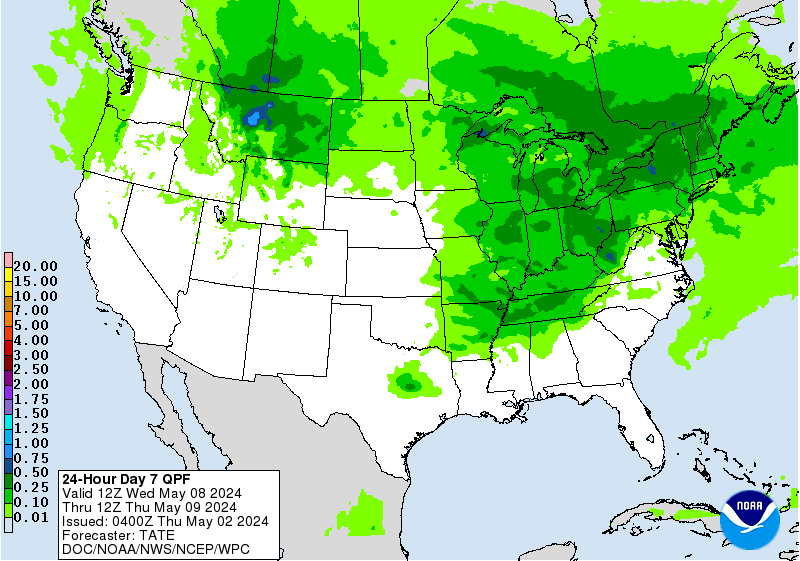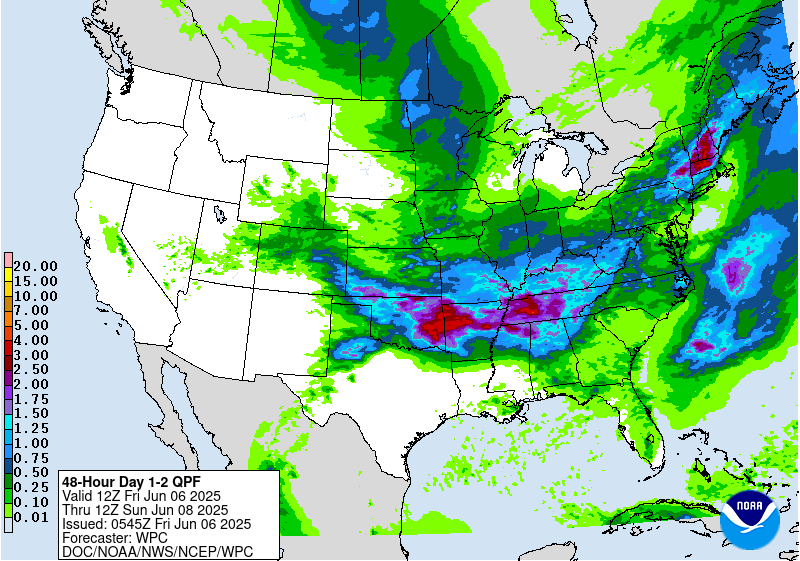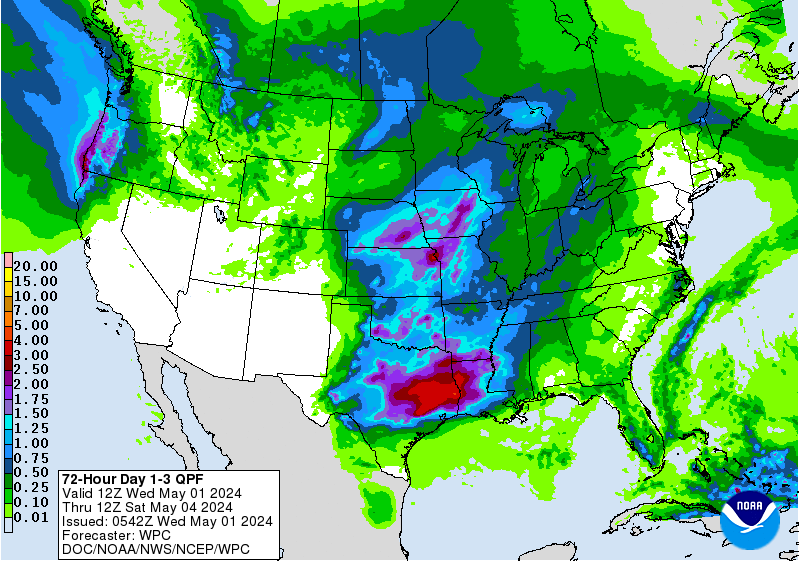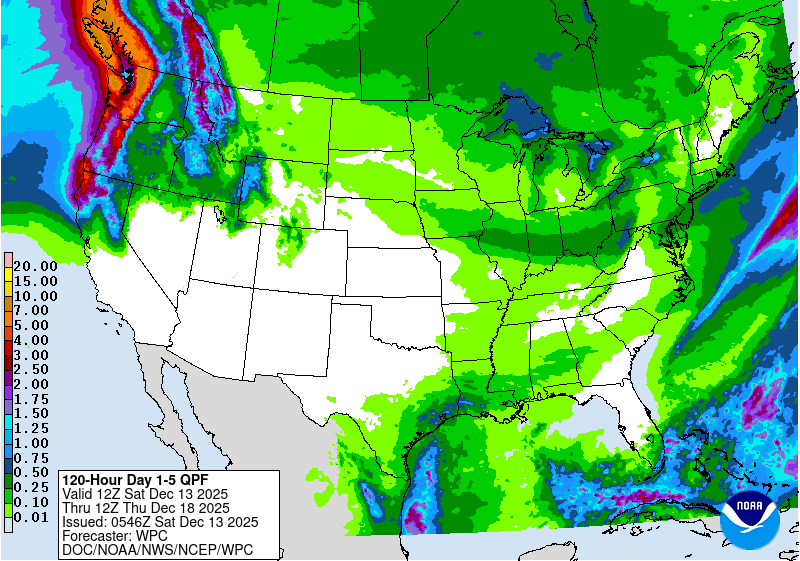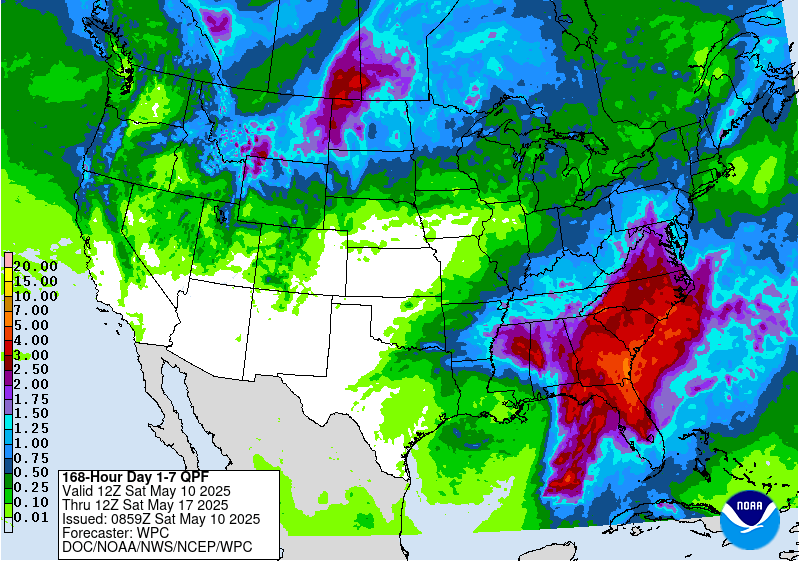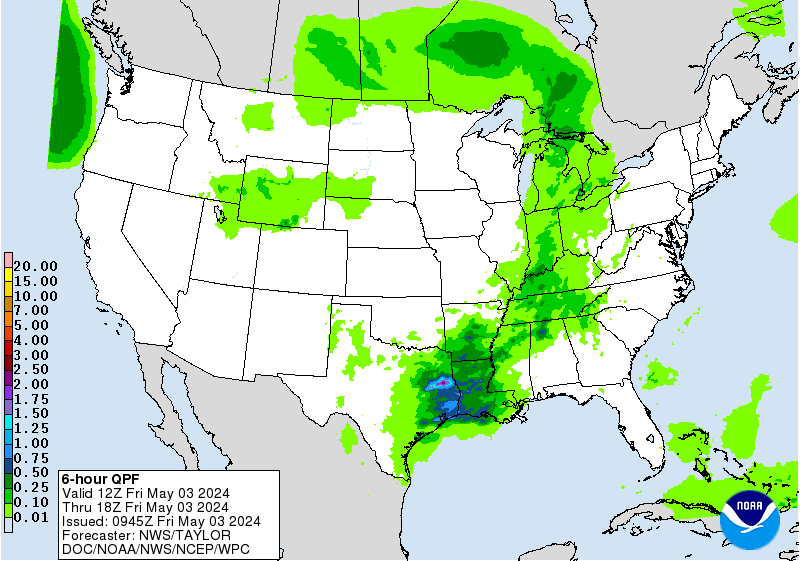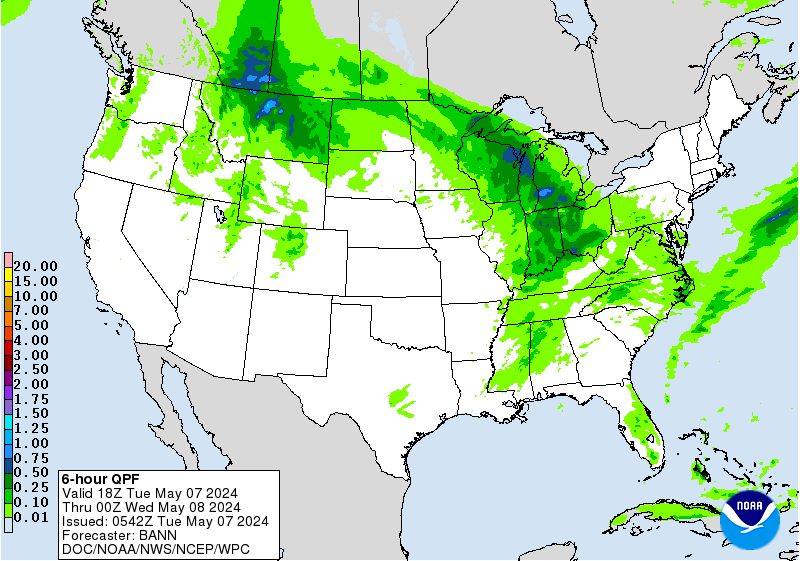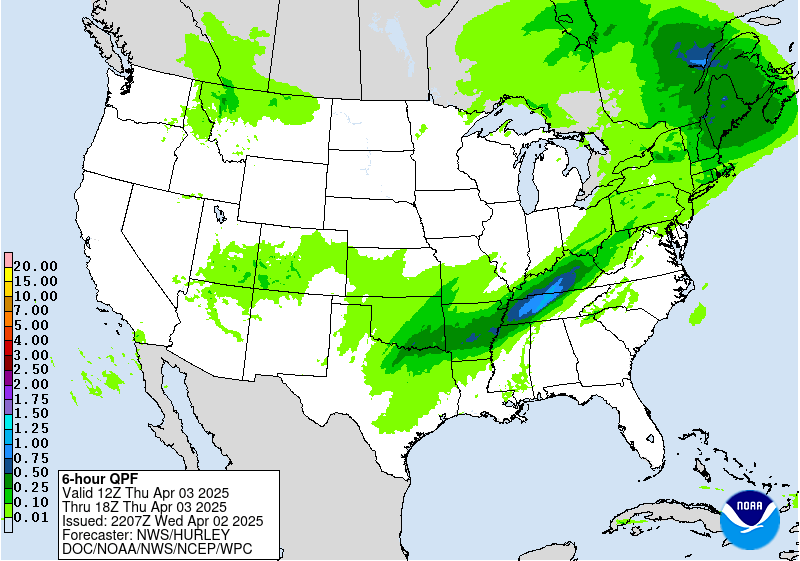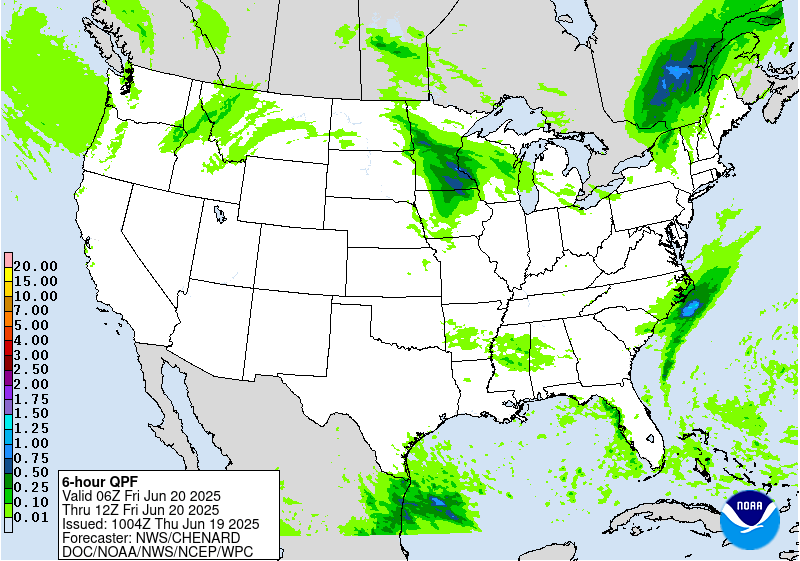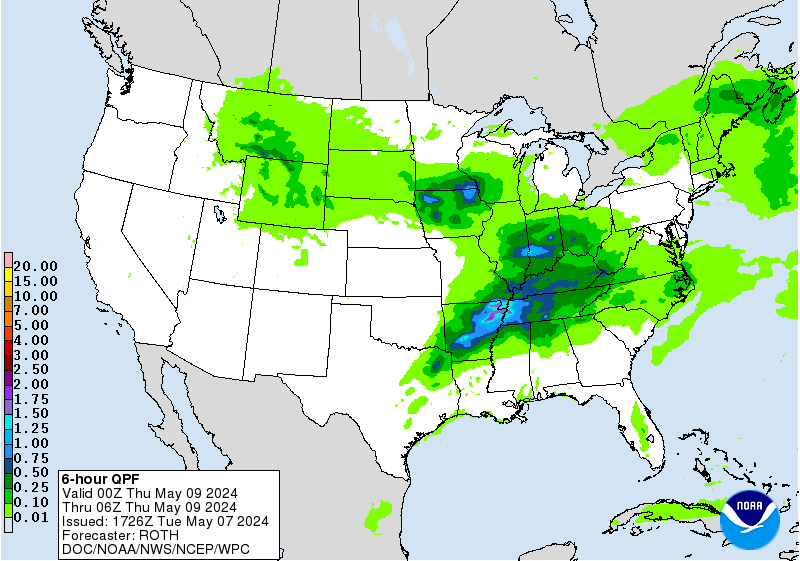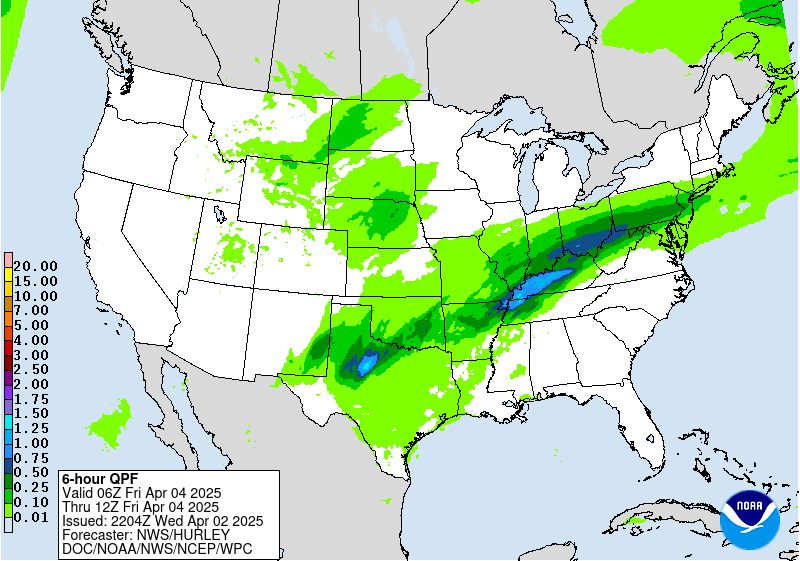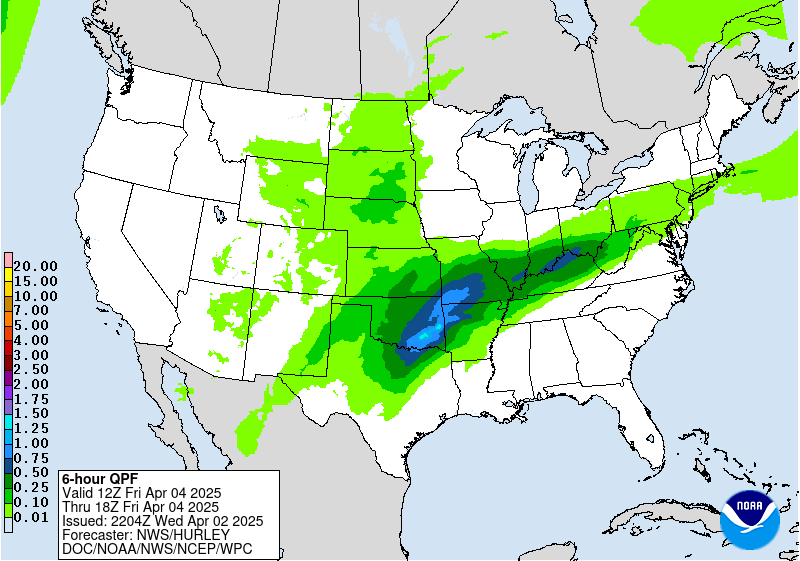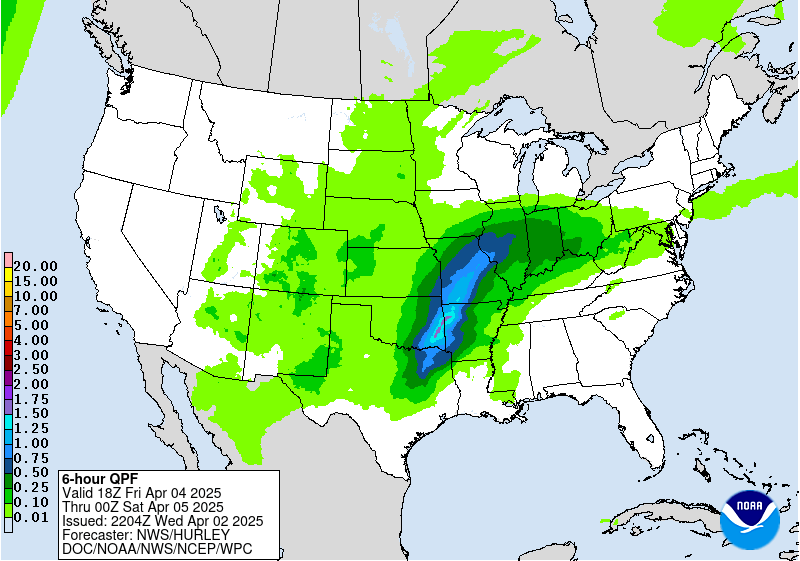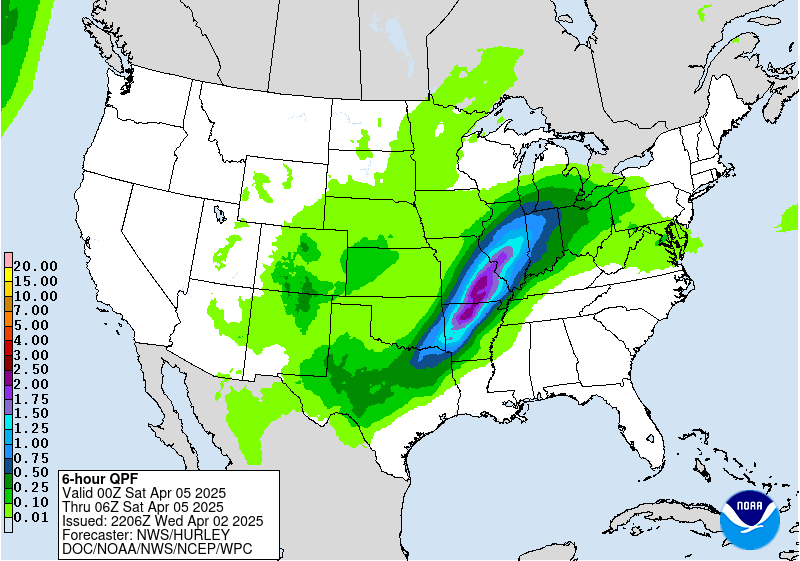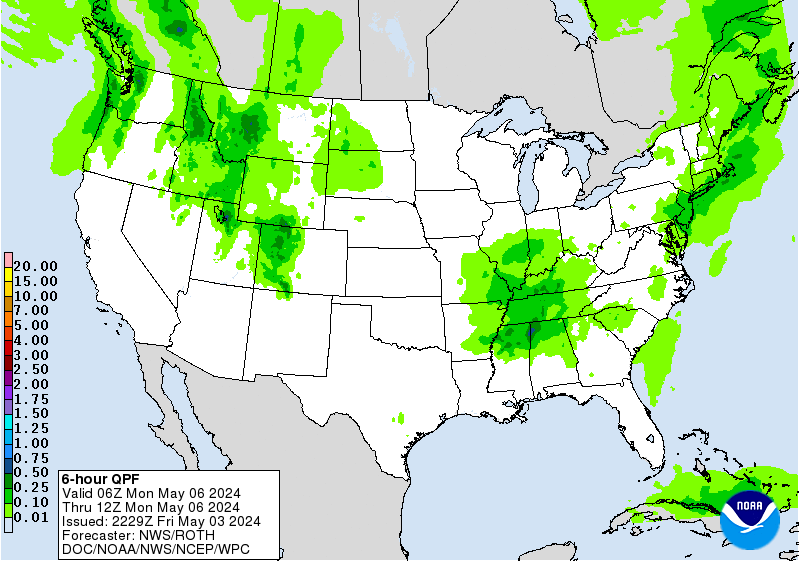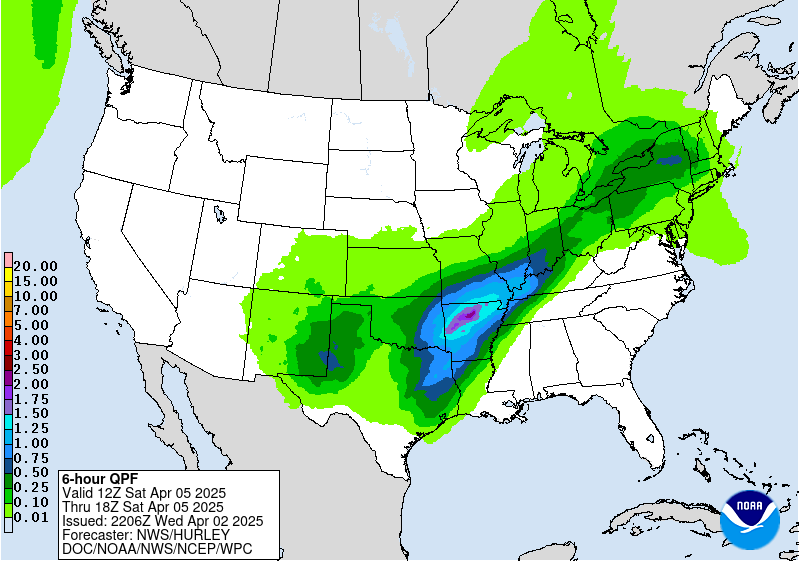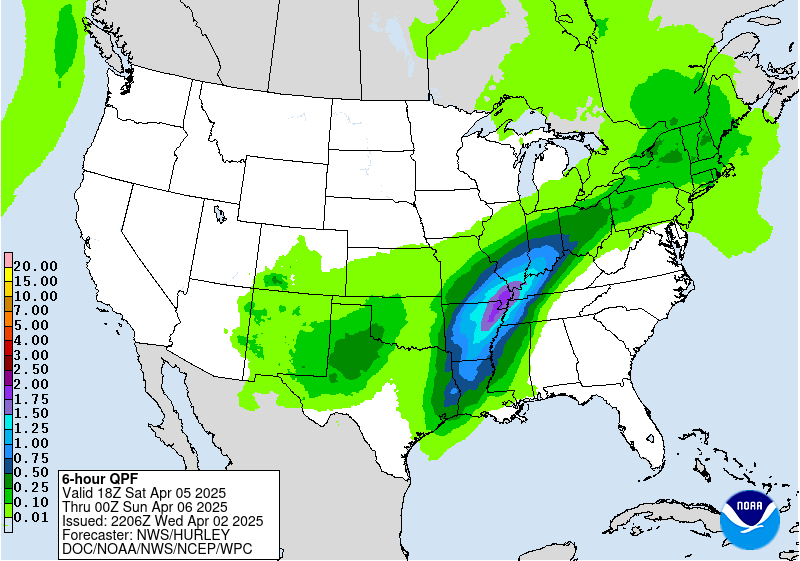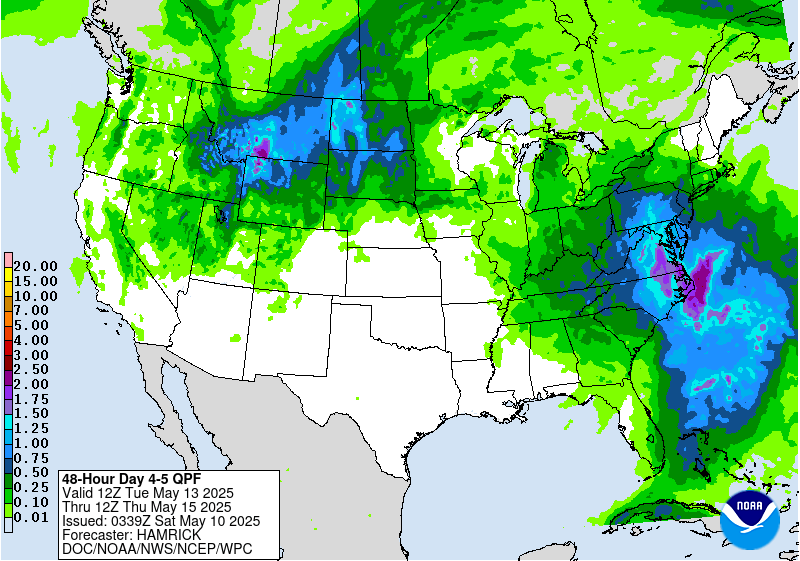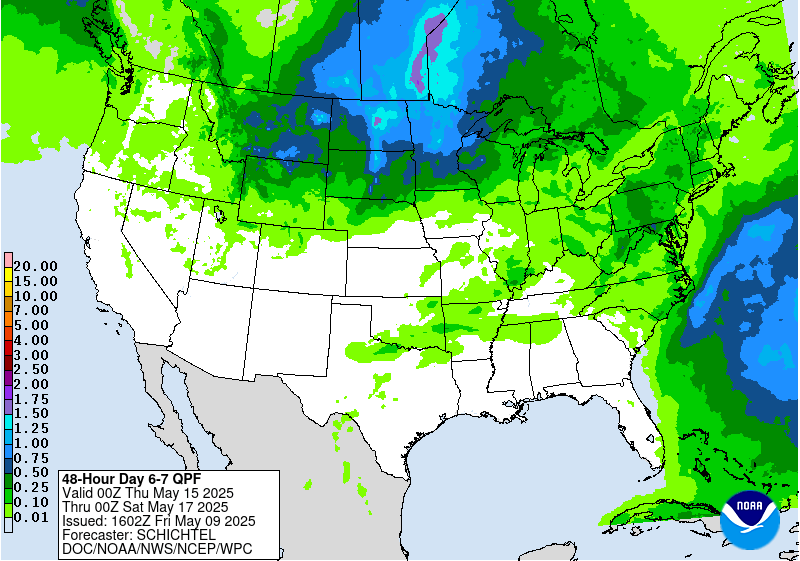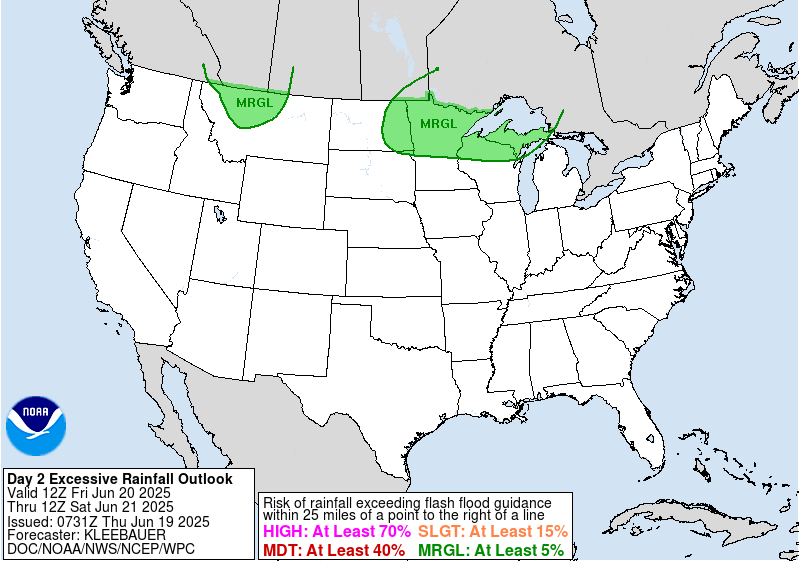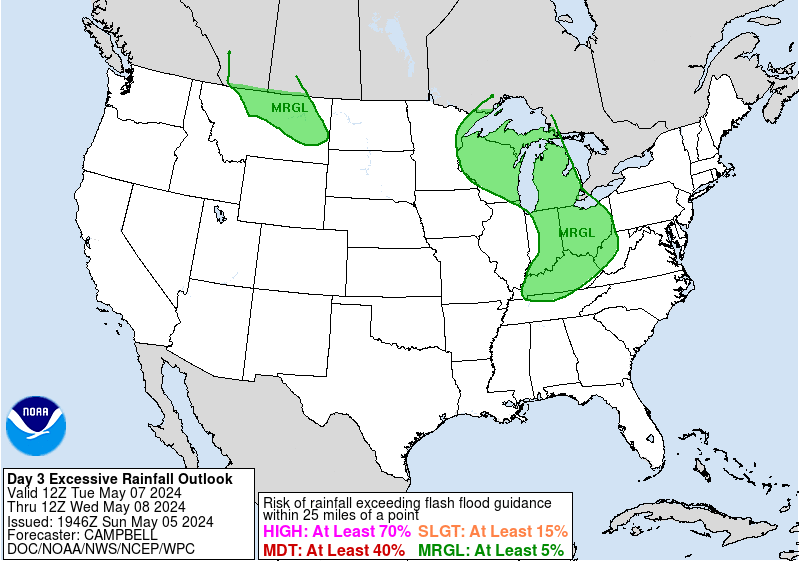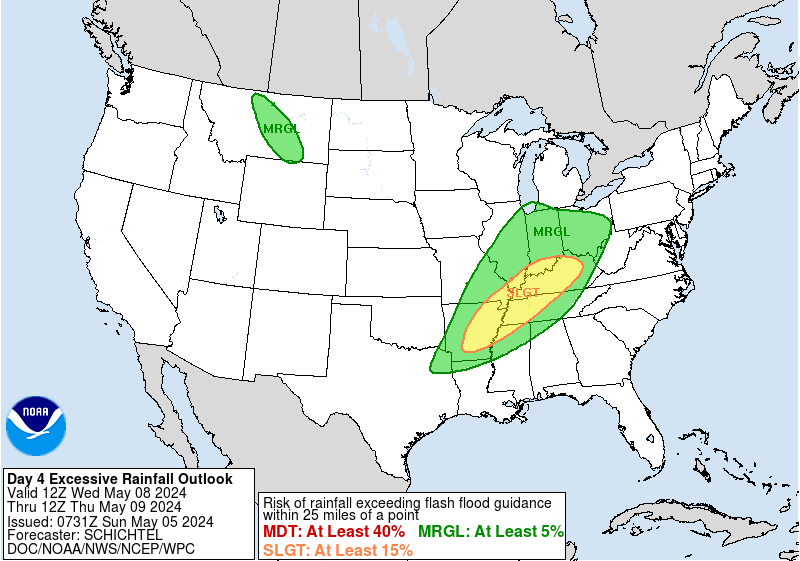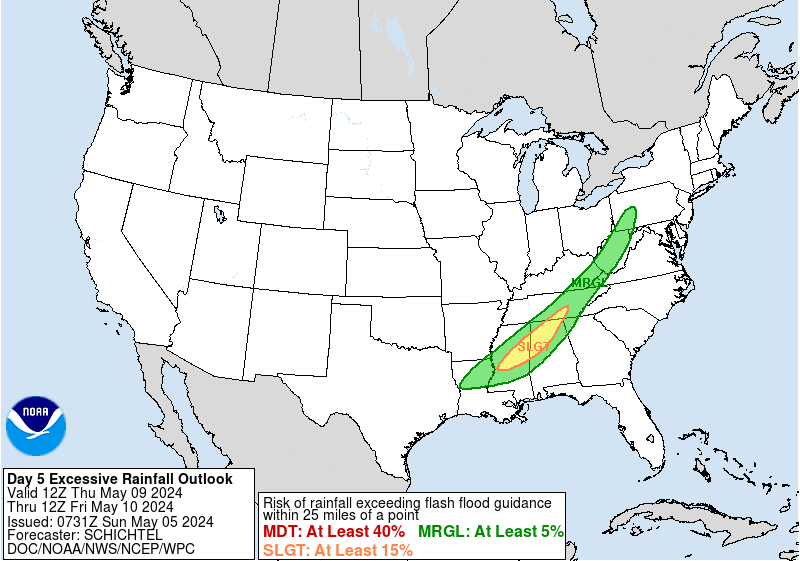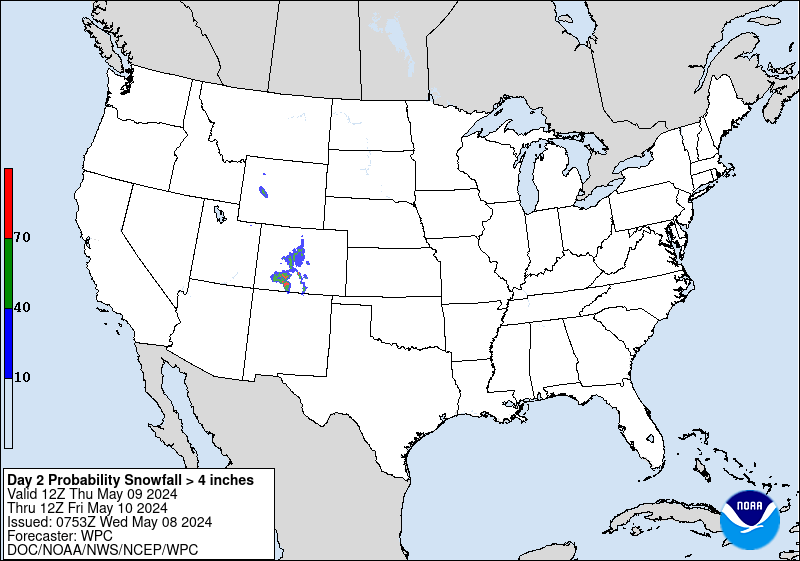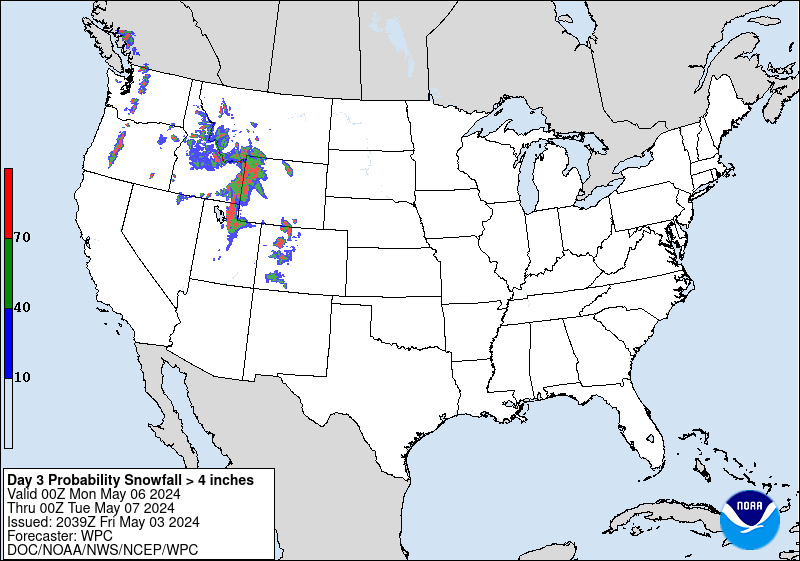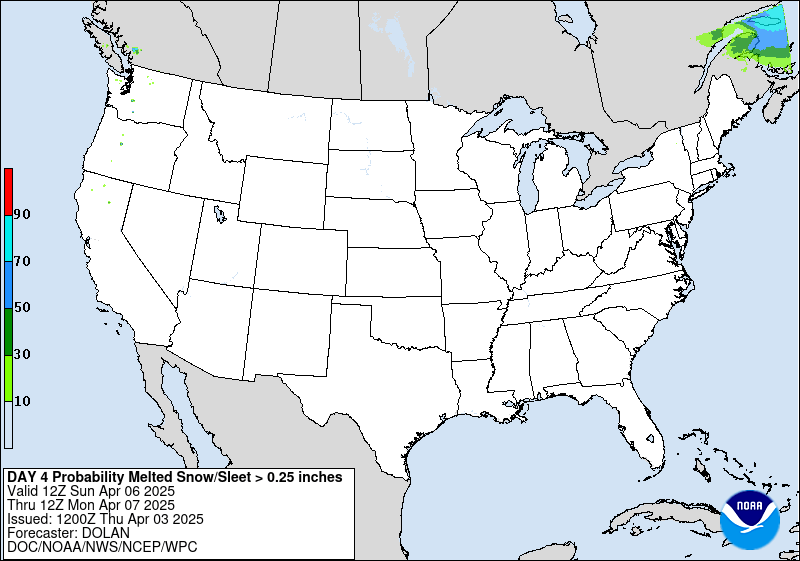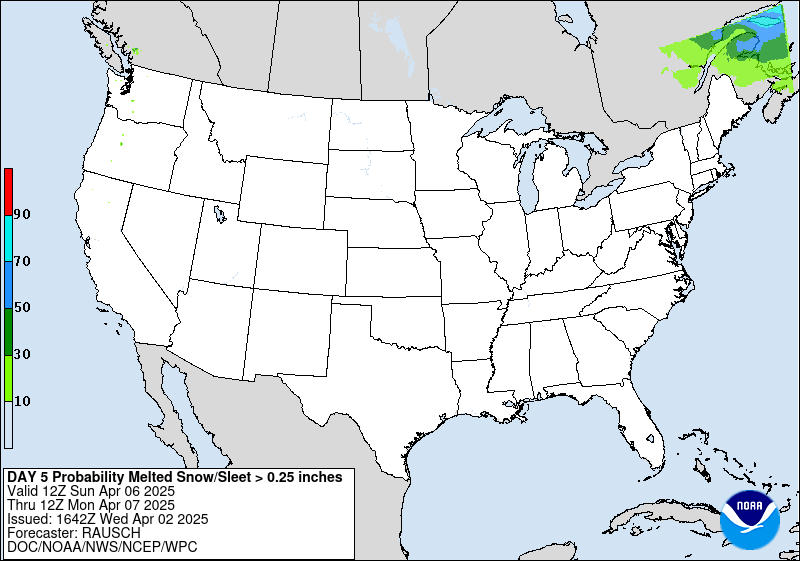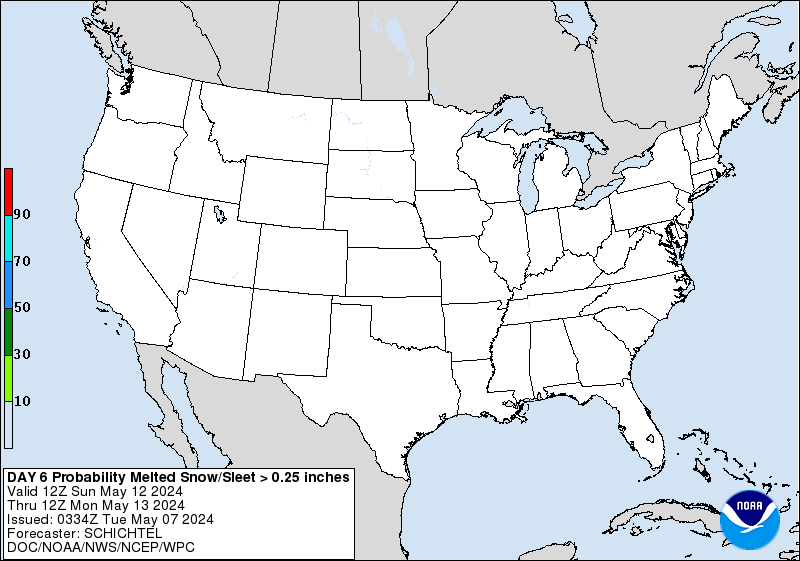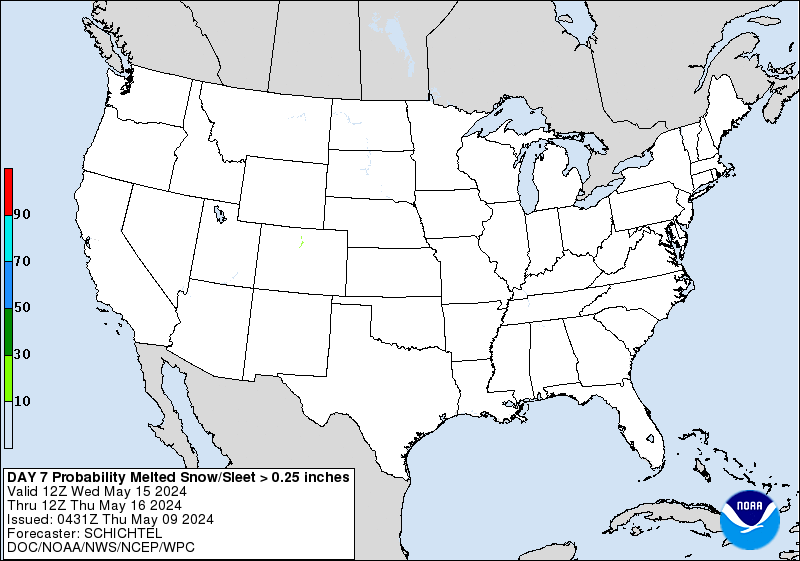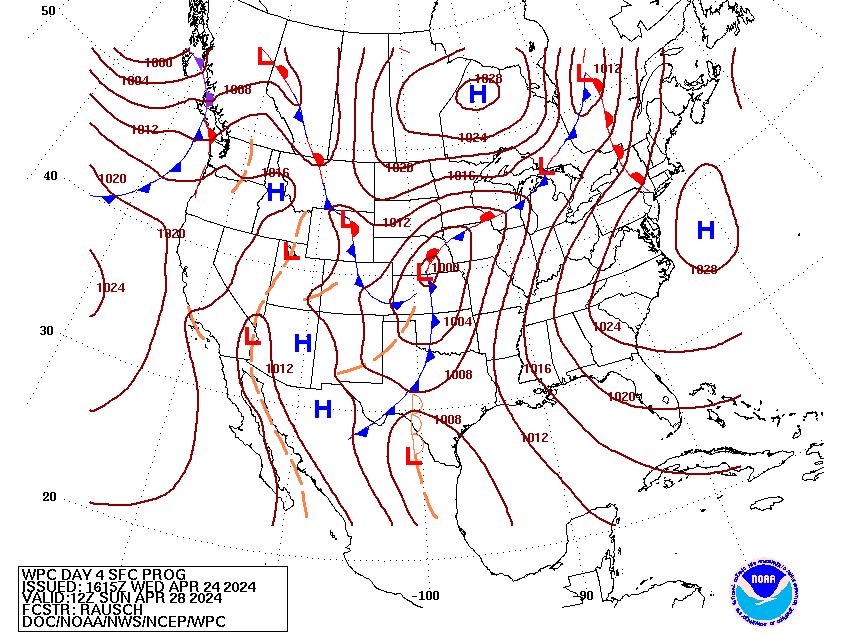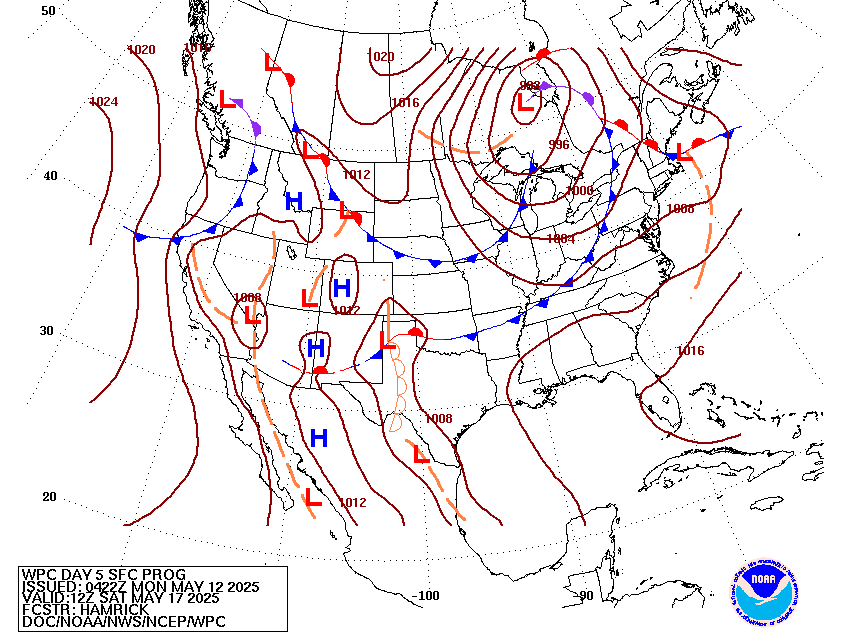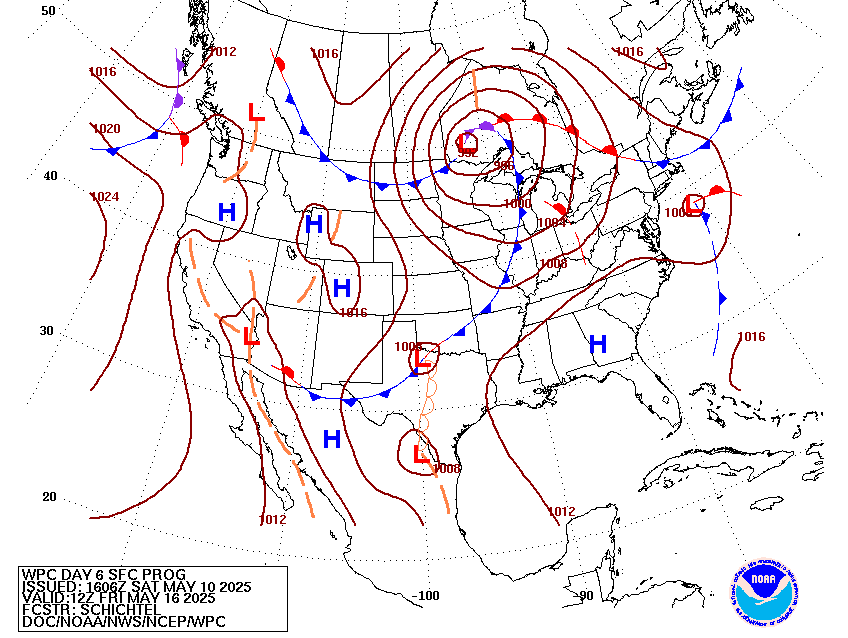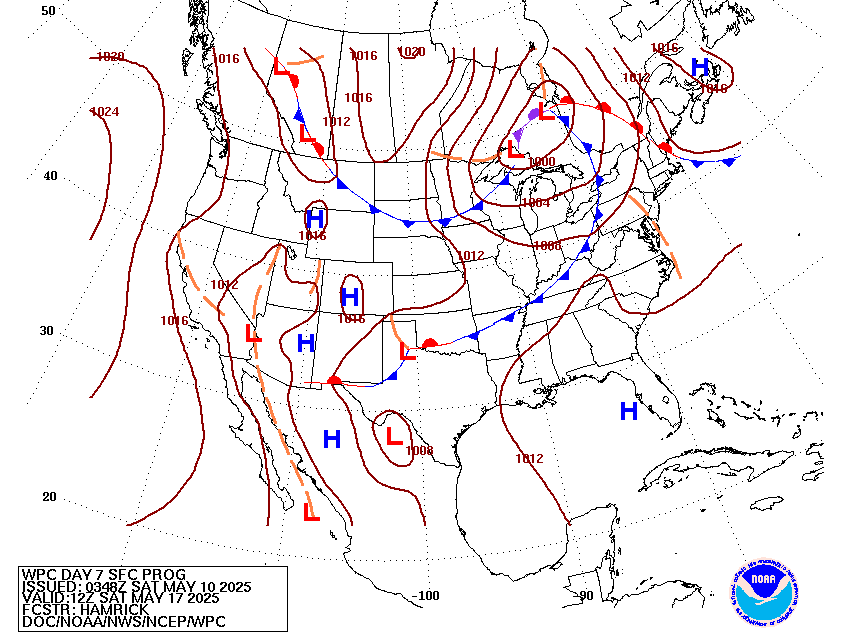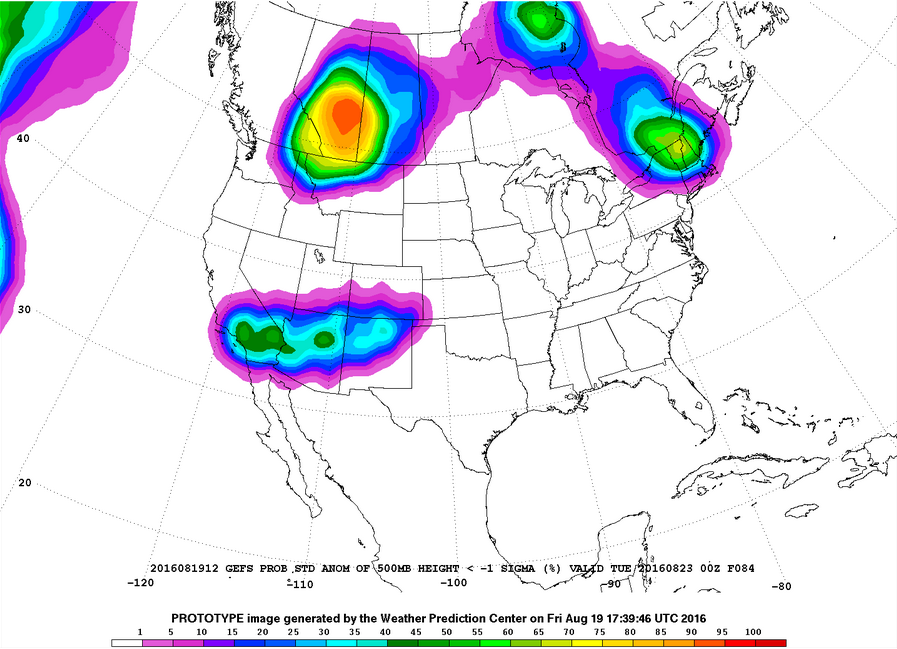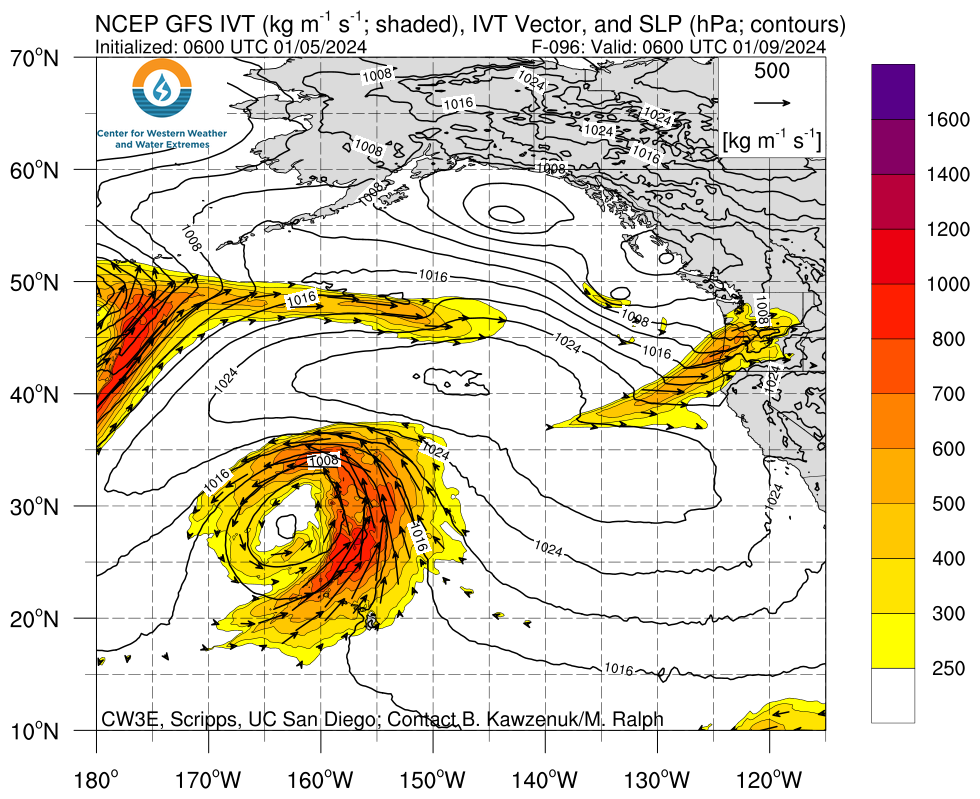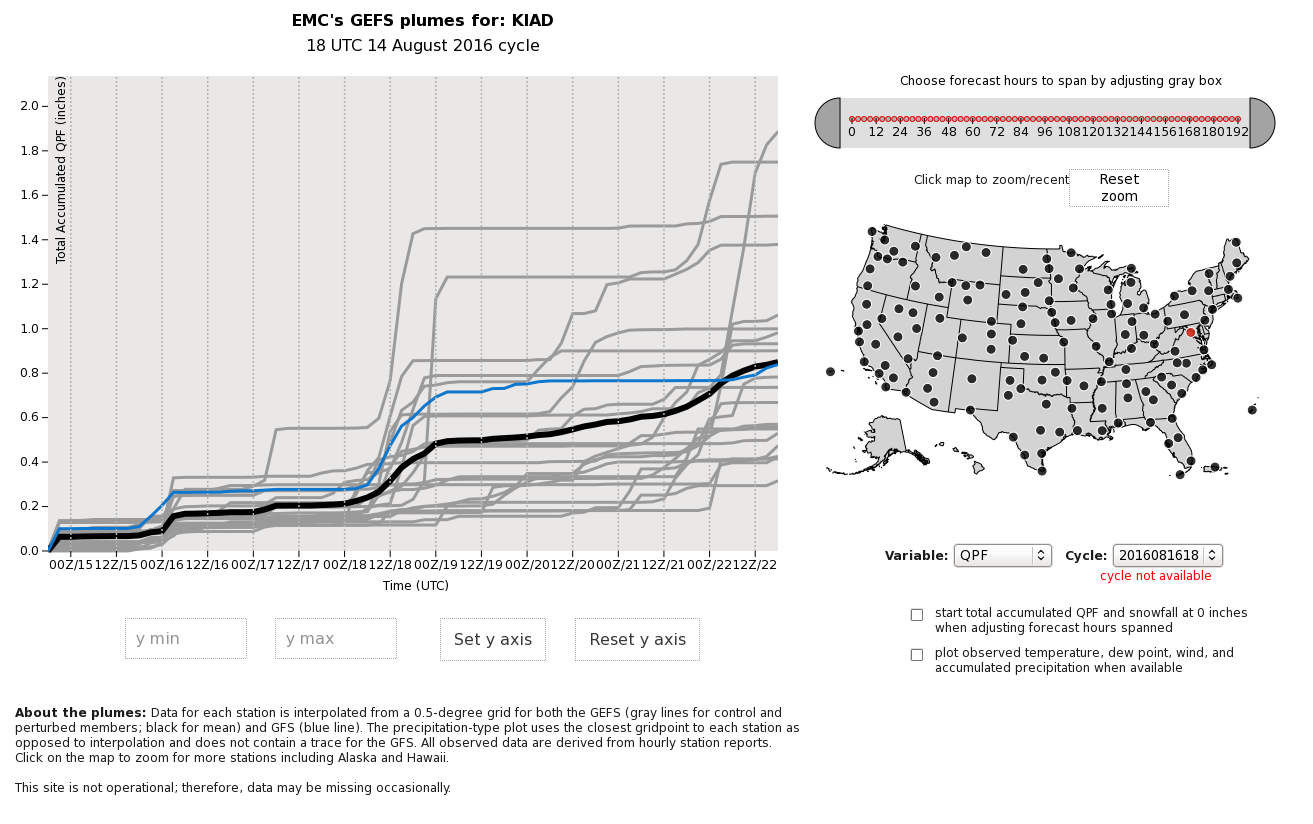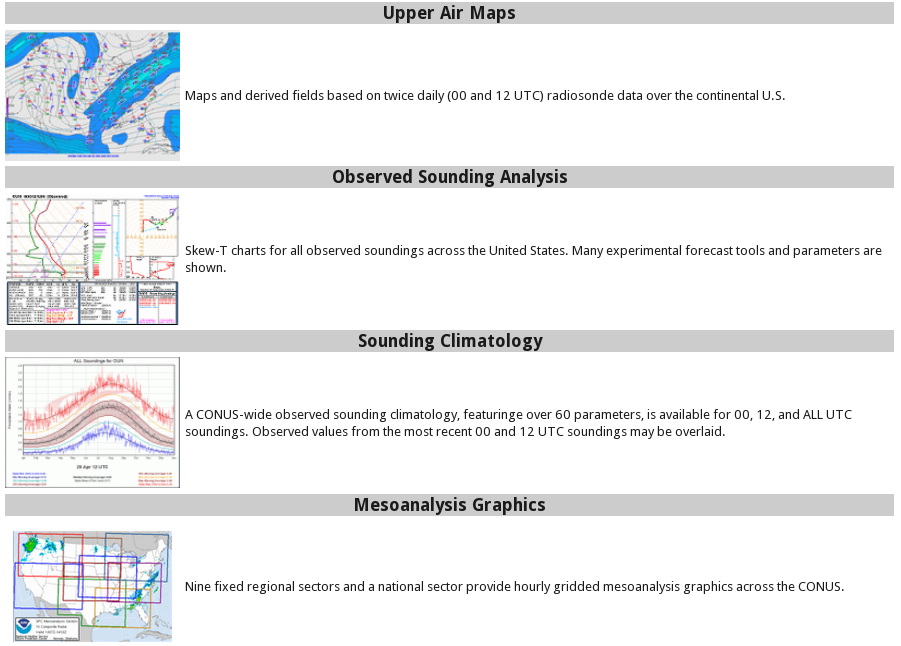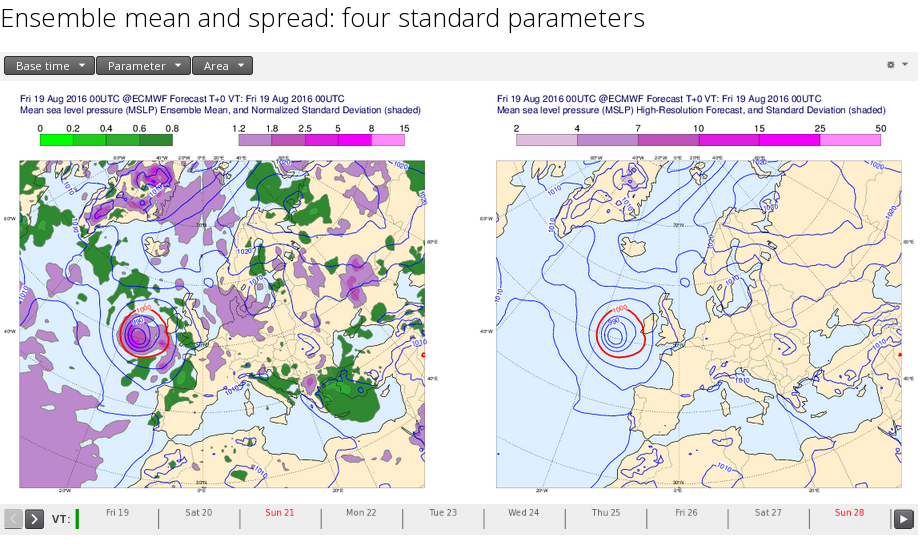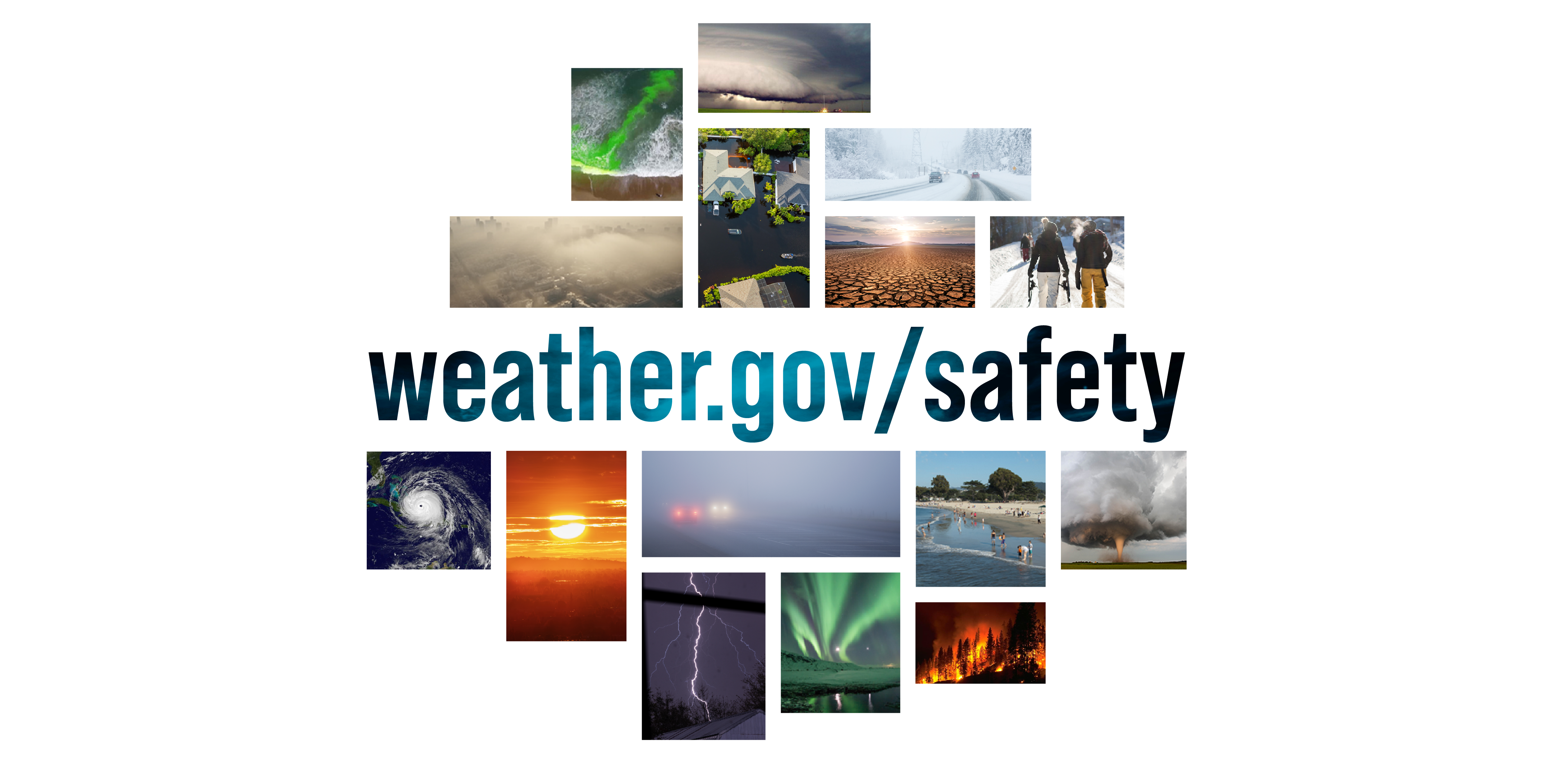Excessive Rainfall Discussion
NWS Weather Prediction Center College Park MD
400 PM EDT Sun Jul 6 2025
Day 1
Valid 16Z Sun Jul 06 2025 - 12Z Mon Jul 07 2025
...THERE IS A SLIGHT RISK OF EXCESSIVE RAINFALL FOR PORTIONS OF
CENTRAL TEXAS AS WELL AS FOR PORTIONS OF CENTRAL NORTH
CAROLINA INTO SOUTH-CENTRAL VIRGINIA...
...16Z Update...
...Carolinas/Southern Virginia...
Tropical Depression Chantal continues to push northwestward across
the Carolinas this afternoon. While the rain threat in South
Carolina has ended, the rains for North Carolina will continue
through this afternoon into this evening. Chantal will begin to
interact with a front across central North Carolina, which will
help to focus the rainfall associated with the core along the
frontal boundary. This is likely to result in a stripe of higher
rainfall totals than the 4-6 inches we have seen along the NC/SC
border since Chantal made landfall last night. Several of the
high-resolution models suggest rainfall totals in a narrow north-
south stripe from SC to VA may locally approach a foot of new rain.
This appears to be a bit overdone, though values above 6 inches
appear likely. This stripe of heavier rain in the averages appears
to remain largely outside of any urban centers (well east of
Charlotte, west of Raleigh, a bit west of Durham, and east of
Greensboro). However, there remains considerable uncertainty as to
where that stripe of heaviest rain sets up in relation to the more
vulnerable urban areas. Given location and intensity uncertainties,
in coordination with RAH/Raleigh, NC forecast office, have opted to
keep the ERO threat risk at a very high end Slight.
Given how close the rainfall may be to a Moderate Risk category,
the area will remain very closely monitored and a Special Update to
a Moderate Risk may be needed with better certainty as to which
communities are most at risk for Moderate Risk level impacts.
...Central Texas...
An area of heavy rain associated with the same disturbance as has
been impacting central Texas the past several days is ongoing just
southwest of Fort Worth this morning. Rainfall rates have
occasionally exceeded 3 inches per hour with the strongest cells,
and the cells are nearly stationary or very slowly moving, both
factors supporting flash flooding. However, the cells have been
generally short-lived regarding their ability to produce heavy
rainfall. Further, the cells producing the heavy rainfall have been
generally disorganized within the bigger rainfall shield, featuring
rates that are much lower. Thus, areas that have been seeing heavy
rainfall have been rather isolated, which also does not support a
Moderate Risk upgrade. Just as in NC, the area will continue to be
monitored, especially as the heaviest cells approach Ft. Worth. The
Slight Risk area has been expanded eastward, following the latest
cellular development.
Through the day, backbuilding and westward movement of the cells
remains in much of the guidance, although there remains little
indication that those cells will have much organization to them.
Given the sensitivity of this area and the upticks in total
forecast rainfall from the ensemble of high resolution guidance,
the Slight Risk area remains largely unchanged near the I-10
corridor well northwest of San Antonio. The Marginal Risk was
expanded to the northern suburbs of San Antonio given some
indication there may be convective development there later this
afternoon, in combination with saturated soils from yesterday's
rainfall in the area.
...Marginal Risks Elsewhere...
No significant changes were made to the other Marginal Risks in the
southern High Plains, Midwest to Michigan, or in Louisiana, as the
forecast remains little changed from the overnight. See the
discussion below for more details.
Wegman
...Previous Discussion...
...Carolinas/Southern Virginia...
Tropical Storm Chantal is forecast to move inland across
northeastern South Carolina early in the period and weaken as it
moves into central North Carolina later today into the overnight.
The growing consensus of the model QPF has an "occluded look" to
it, with the heaviest amounts setting up west of the track. Not
much change was made to the previous Slight Risk area, with minor
adjustments based on the new HREF guidance. This area reflects the
HREF higher neighborhood probabilities for 3+ inches, which extend
from parts of the Pee Dee region and north-central SC through
central NC into far south-central VA.
...Central Texas...
Fueled by a lingering axis of deep moisture (2 to 2.25 PWs
according to recent runs of the RAP) and weak mid level energy
drawn south by an upstream ridge, concerns remain for additional
heavy rains and flooding across portions of North Texas back into
South-Central Texas and the Hill Country. QPF has trended upward
within the highlighted region, with the HREF once again showing a
strong signal for locally heavy amounts over 3 inches within the
Slight Risk area. These amounts would easily exceed FFGs over those
areas recently impacted by heavy amounts. Therefore, will continue
to monitor for the potential need to upgrade to a Moderate Risk
for parts of the region.
...Upper Great Lakes to the Central Plains/Ozarks...
A series of shortwaves will move through a broad upper trough
centered over the northern Plains, pushing a wavy cold front, that
extends from the upper Great Lakes back into the central Plains,
farther south. A deep moisture pool ahead of the front (PWs over 2
inches in some locations) will fuel widespread shower and storm
coverage. Overnight guidance indicates that in addition to the
ample moisture, favorable upper jet dynamics and some potential for
storm training, will contribute to a greater threat for heavier
amounts (2-3 inches) across parts of Lower Michigan. However,
locally heavy amounts, along with isolated flooding concerns,
cannot be ruled out further southeast along and ahead of the front.
...Central and Southern High Plains into the Southern Rockies...
Moist upslope flow will contribute to afternoon storm initiation
along the high terrain, with the guidance continuing to present a
notable signal for organized development contributing to heavy
amounts across portions of western Kansas and Nebraska. The
overnight HREF indicates 2-3 inches are likely for parts of the
region. Storms are expected to remain less organized further to
south, but may fire and produce isolated flooding concerns across
the more vulnerable parts of central and eastern New Mexico.
...Southern Louisiana/Mississippi...
Models show an upper low over the northeastern Gulf retrograding
westward back along the Gulf Coast. This will bring increasing rain
chances to the region, with the potential for heavy amounts. A
Marginal Risk was maintained for parts of southern Louisiana and
southwestern Mississippi, where the HREF presents a strong signal
for amounts over 2 inches.
Pereira
Day 1 threat area:
www.wpc.ncep.noaa.gov/qpf/94epoints.txt
Excessive Rainfall Discussion
NWS Weather Prediction Center College Park MD
400 PM EDT Sun Jul 6 2025
Day 2
Valid 12Z Mon Jul 07 2025 - 12Z Tue Jul 08 2025
...THERE IS A MARGINAL RISK OF EXCESSIVE RAINFALL FROM THE UPPER
MIDWEST TO THE SOUTHWEST, THE NORTHEAST TO THE SOUTHERN PLAINS, AND
THE MID-ATLANTIC...
...2030Z Update...
The Marginal Risk across portions of the Northeast/Mid-Atlantic was
merged with the inherited Marginal along the coastal Mid-Atlantic
with this update. Abundant tropical moisture associated with the
remnants of Chantal will continue streaming north on Monday. While
organized convection will likely have dissipated by Monday
afternoon, the combination of ample heating and instability and
that moisture should allow for widespread convective development,
albeit disorganized, across the Mid-Atlantic. The disorganized
nature of it should preclude any more than isolated instances of
flash flooding, however the abundant moisture will favor any cells
that form to have the potential of causing locally heavy rain and
resultant flooding. The signal for drier conditions into
southeastern and eastern Pennsylvania has largely disappeared, so
the Marginals were merged.
No other changes were made to the Marginal Risks in the middle of
the country and from Texas through the Ohio Valley. The rainfall
forecast in portions of central Texas around and southeast of San
Angelo has increased a bit, associated with the same disturbance
that has been causing the rain over the past few days. With each
consecutive day the available moisture, instability, and advection
in this area decreases...so we should continue to see the drying
trend as regards coverage and intensity of convection to continue.
A Slight Risk was considered in this area, but that will be tied to
how much convection occurs this afternoon in the area, which for
now has been muted, precluding an upgrade with this update.
Wegman
...Previous Discussion...
...Eastern North Carolina to Eastern Pennsylvania and New Jersey...
Although the surface circulation may no longer be well-defined,
the mid level remnants and an its associated plume of deeper
moisture are expected to lift north from eastern North Carolina
along the Mid-Atlantic Coast ahead of an upstream trough, bringing
the potential for locally heavy rain and perhaps some isolated
flooding concerns from eastern North Carolina to eastern
Pennsylvania and New Jersey.
...Northeast to Mid Mississippi Valley/Ozarks...
A frontal boundary will continue to slide farther east across the
Northeast this period. Deep moisture ahead of the boundary (PWs
1.75-2 inches and 2-3 std dev above normal), along with favorable
upper jet forcing are expected to contribute to some organized
heavier amounts from western and northern New York into parts of
northern New England. Less organized activity is expected farther
southeast. However, once again locally heavy amounts and isolated
flooding concerns cannot be ruled out for areas back through the
Ohio Valley into the mid Mississippi Valley and Ozark region.
...Southern Plains...
The latest HREF shows that activity developing over parts of Texas
on Day 1 may continue into Day 2, producing additional heavy
amounts and prolonging flooding concerns across parts of Texas
including portions of South-Central Texas and the Hill Country
northeastward through North Texas...
...Upper Midwest to the Southwest...
Amplifying southerly low level winds over the Plains will support
increasing moisture across the central into the northern Plains.
This moisture along with mid level energy moving out into the
region, will support widespread showers and thunderstorms, with
the guidance showing a signal for organized activity developing
over the central High Plains. Forecast confidence is limited by
significant model spread in the details. However, the potential for
at least isolated flash flooding concerns cannot be ruled out.
Farther to the south, activity again is expected to be less
organized. But again, cannot rule out at least an isolated flash
flooding concern, especially across vulnerable portions of eastern
and central New Mexico.
Pereira
Day 2 threat area:
www.wpc.ncep.noaa.gov/qpf/98epoints.txt
Excessive Rainfall Discussion
NWS Weather Prediction Center College Park MD
400 PM EDT Sun Jul 6 2025
Day 3
Valid 12Z Tue Jul 08 2025 - 12Z Wed Jul 09 2025
...THERE IS A MARGINAL RISK OF EXCESSIVE RAINFALL FROM THE MIDWEST
AND THE NORTHEAST TO THE OZARKS...
...2030Z Update...
The guidance has dried out portions of Oklahoma, Texas, and New
Mexico with the latest suite. Thus, due to lack of signal, the
Marginal Risk was trimmed out of these areas, with the westernmost
extent of the Marginal now in eastern Kansas and Oklahoma.
The rainfall forecast has increased a bit across the Mid-Atlantic,
particularly in the DMV area. Should these signals persist or
increase, a Slight Risk upgrade may be needed with future updates,
but given the newness up this update with little forcing noted,
have opted to keep the area in a Marginal risk to allow for run-
to-run consistency in the guidance.
Wegman
...Previous Discussion...
...Northeast through the Ohio Valley...
A cold front will continue to slide slowly southeast across the
Northeast and the Mid Atlantic. Deepening moisture ahead of the
boundary (increasing above 2 inches in many locations) will raise
the potential for at least locally heavy amounts and isolated
flooding to occur.
...Midwest to the Southern High Plains/Rockies...
An upper level shortwave and associated axis of deeper moisture may
produce storms with locally heavy amounts from the mid Mississippi
Valley/Great Lakes region back through the mid Mississippi and
lower Missouri valleys into the southern Plains.
Meanwhile, low level upslope flow may produce another round of
showers and storms developing along the southern Rockies into the
High Plains.
Pereira
Day 3 threat area:
www.wpc.ncep.noaa.gov/qpf/99epoints.txt
Extended Forecast Discussion
NWS Weather Prediction Center College Park MD
256 PM EDT Sun Jul 6 2025
Showers and thunderstorms are expected to be focused in proximity
to progressive cold fronts, stalled boundaries and round the upper
high in the Southern Rockies. The wavy front into the eastern U.S.
may be a focus for heavier rain and thunderstorms. This includes
areas from the Corn Belt into the Midwest and Ohio Valley,
Appalachians, Mid-Atlantic, and Northeast. There are Marginal Risks
in place (level 1 of 4) for the ArkLaTex region on Day 4, for parts
of the Dakotas and Upper Midwest on Day 5, and for portions of the
Mid-Atlantic into North Carolina and the southern Appalachians for
both days 4 and 5 for an axis of heavier rainfall that is likely
south of a frontal boundary.
Many locations will have daily maximums climbing well into the
100s at lower elevations across the Southwest and mainly dry
conditions, except for perhaps far southeastern Arizona into New
Mexico where some monsoonal moisture may be present. Experimental
HeatRisk values may rise to Major or Extreme levels (3 out of 4 or
4 out of 4) from the California deserts into southern Nevada, Utah,
and Arizona. Extreme Heat Watches have been raised for parts of
Arizona through at least Thursday.
Campbell
Extended Forecast Discussion
NWS Weather Prediction Center College Park MD
256 PM EDT Sun Jul 6 2025
Showers and thunderstorms are expected to be focused in proximity
to progressive cold fronts, stalled boundaries and round the upper
high in the Southern Rockies. The wavy front into the eastern U.S.
may be a focus for heavier rain and thunderstorms. This includes
areas from the Corn Belt into the Midwest and Ohio Valley,
Appalachians, Mid-Atlantic, and Northeast. There are Marginal Risks
in place (level 1 of 4) for the ArkLaTex region on Day 4, for parts
of the Dakotas and Upper Midwest on Day 5, and for portions of the
Mid-Atlantic into North Carolina and the southern Appalachians for
both days 4 and 5 for an axis of heavier rainfall that is likely
south of a frontal boundary.
Many locations will have daily maximums climbing well into the
100s at lower elevations across the Southwest and mainly dry
conditions, except for perhaps far southeastern Arizona into New
Mexico where some monsoonal moisture may be present. Experimental
HeatRisk values may rise to Major or Extreme levels (3 out of 4 or
4 out of 4) from the California deserts into southern Nevada, Utah,
and Arizona. Extreme Heat Watches have been raised for parts of
Arizona through at least Thursday.
Campbell





